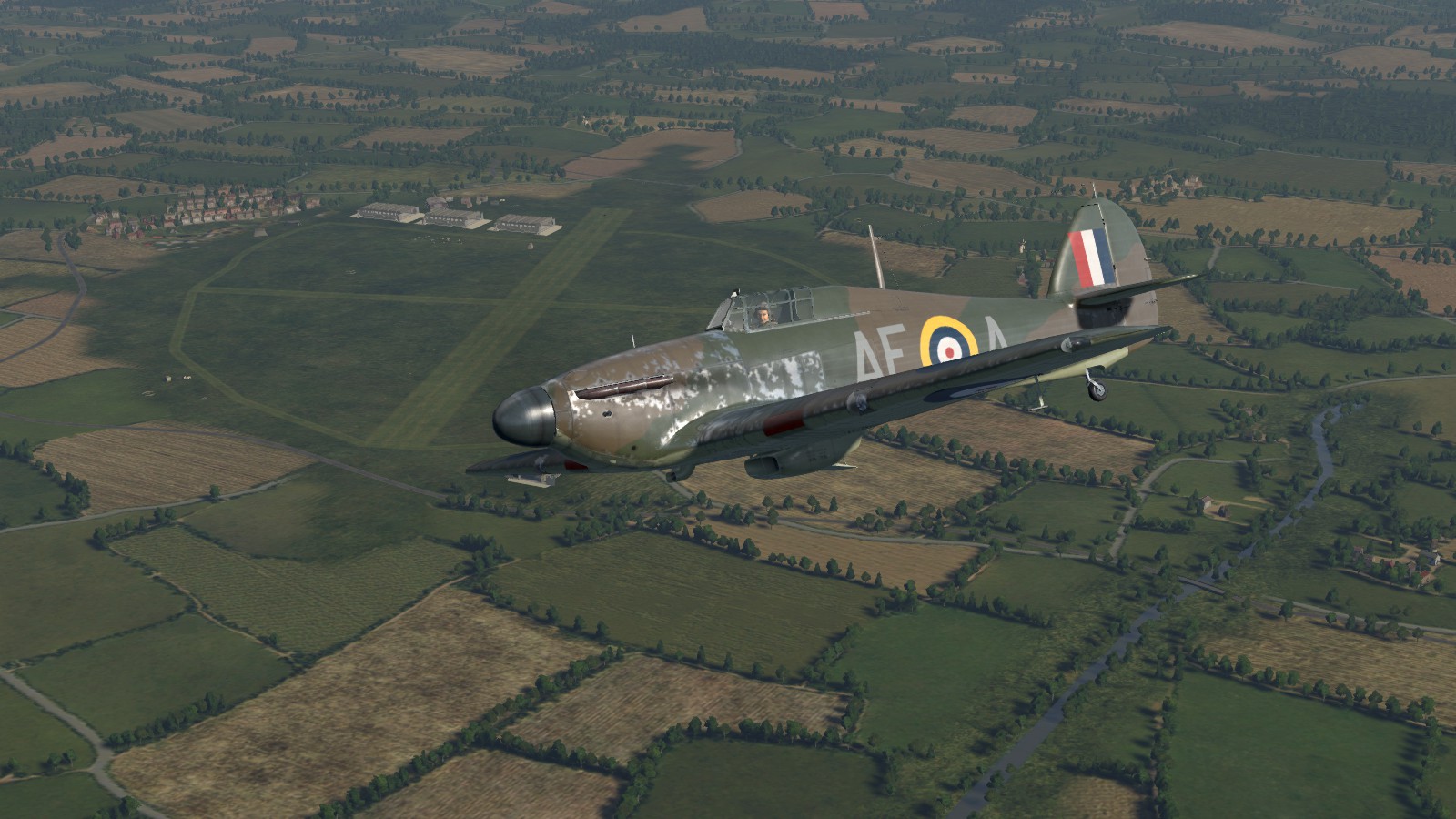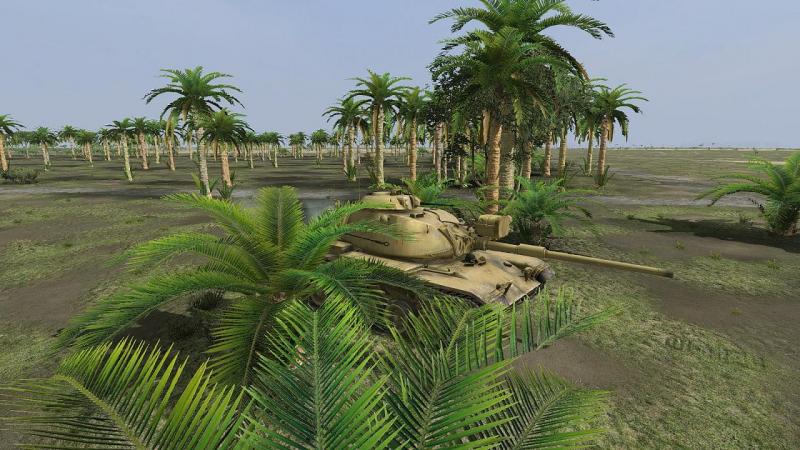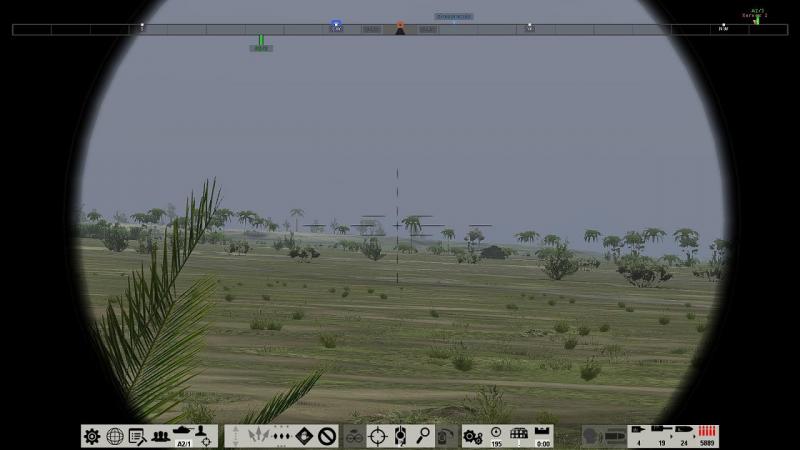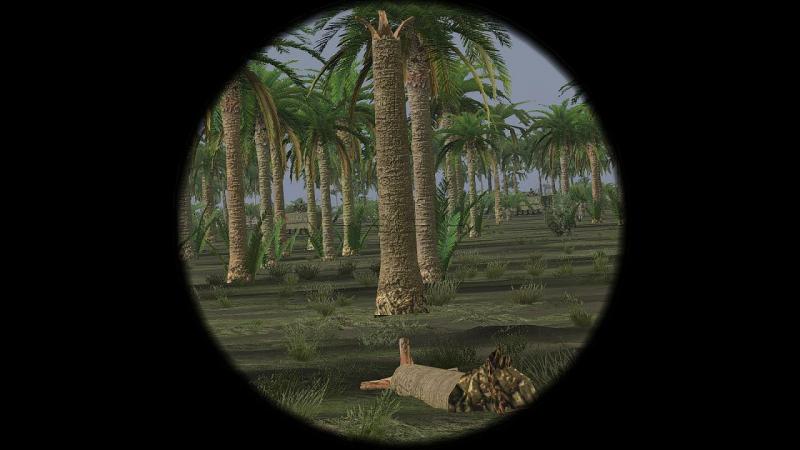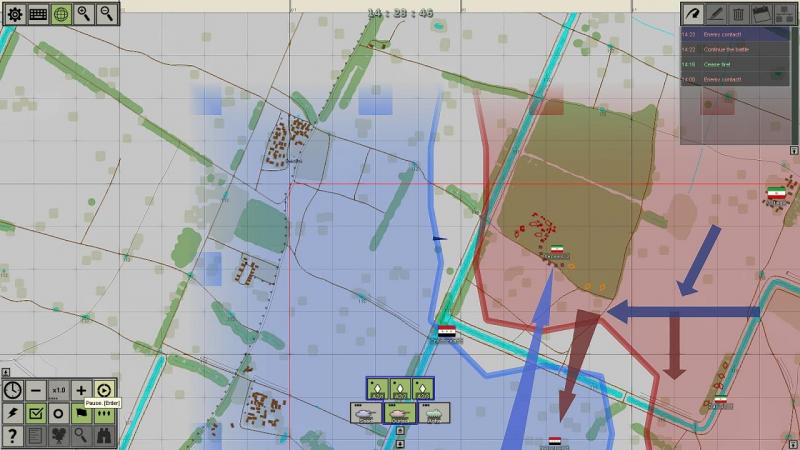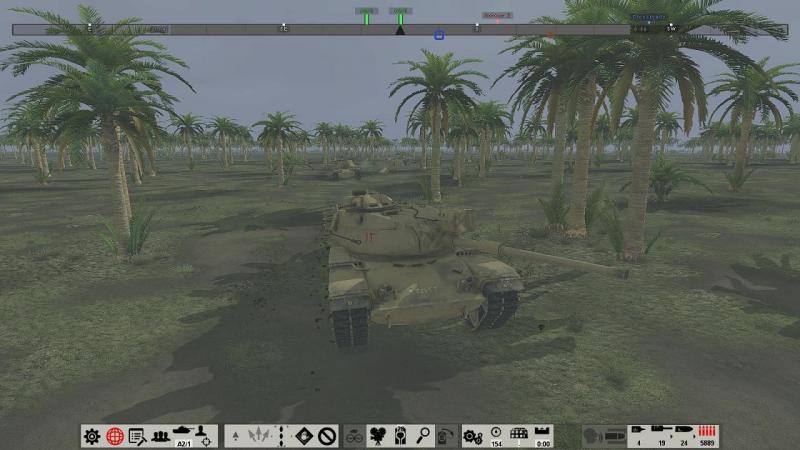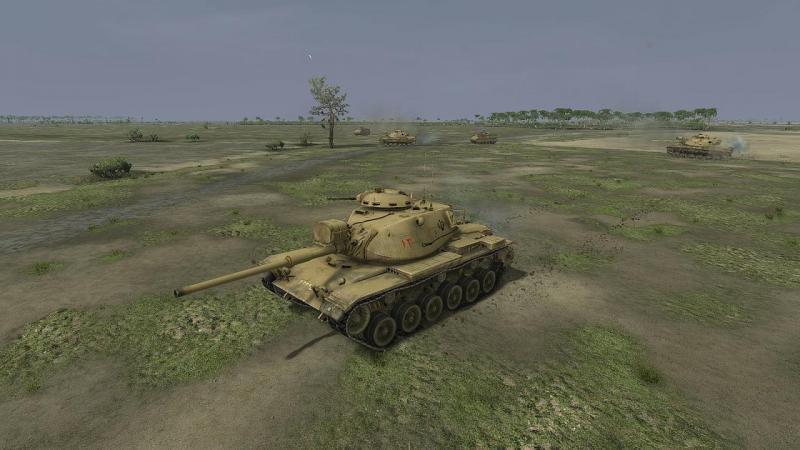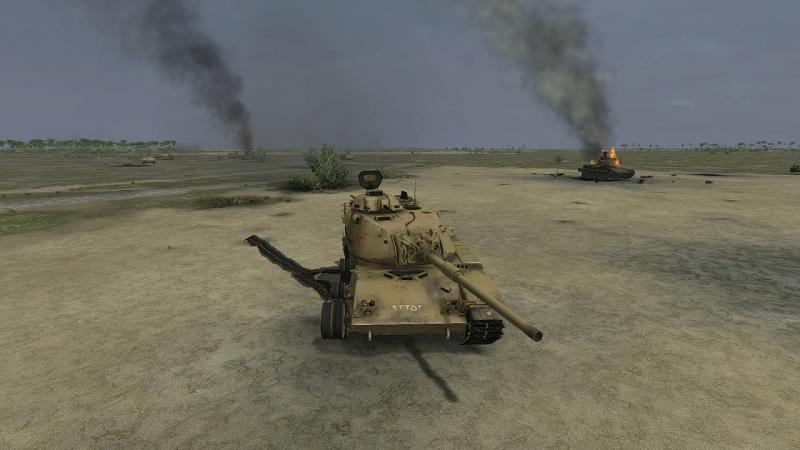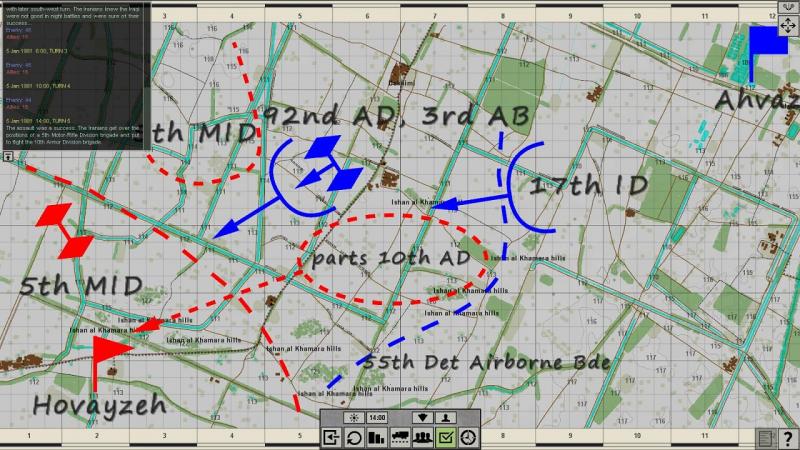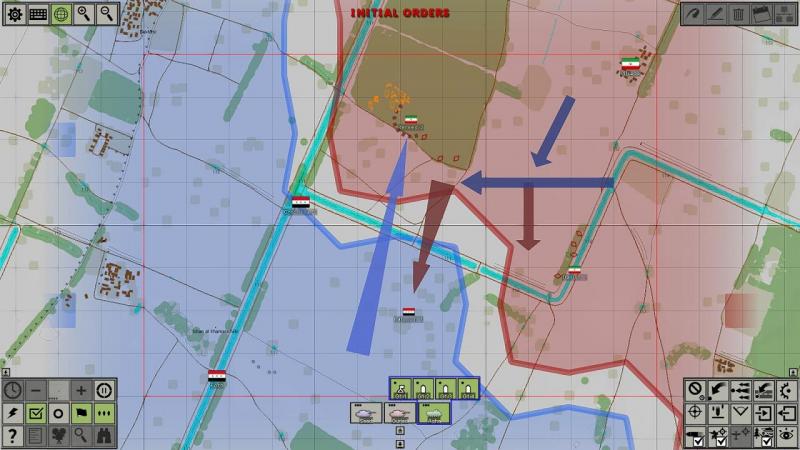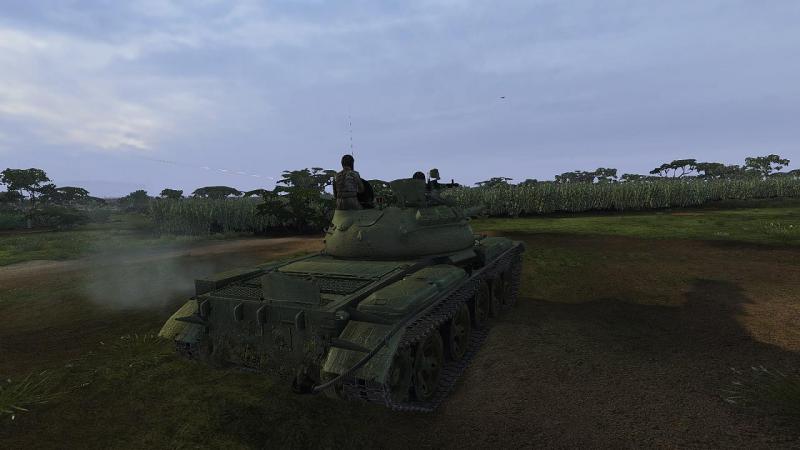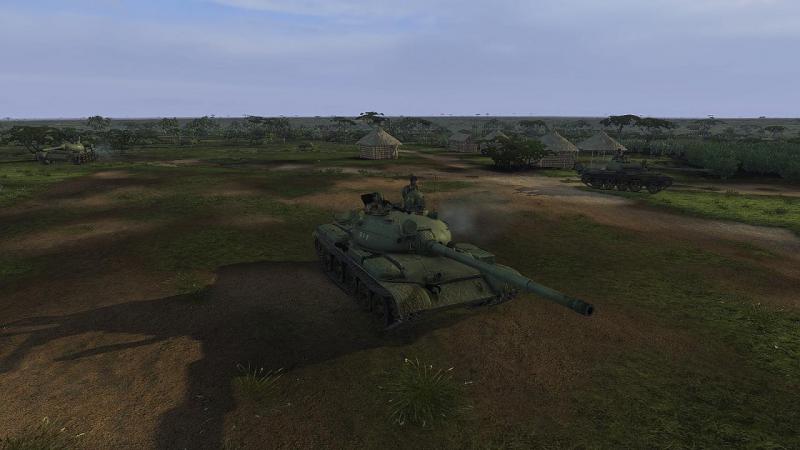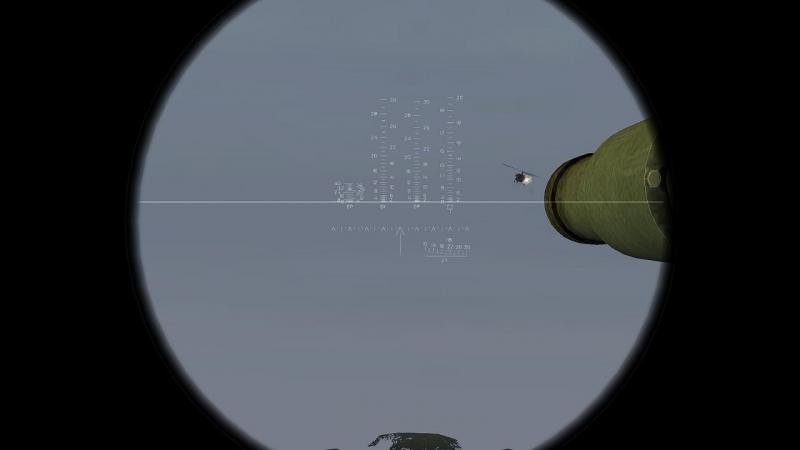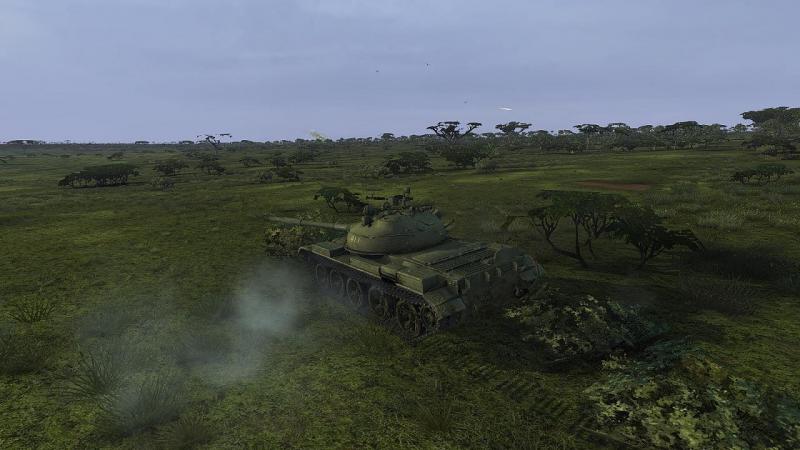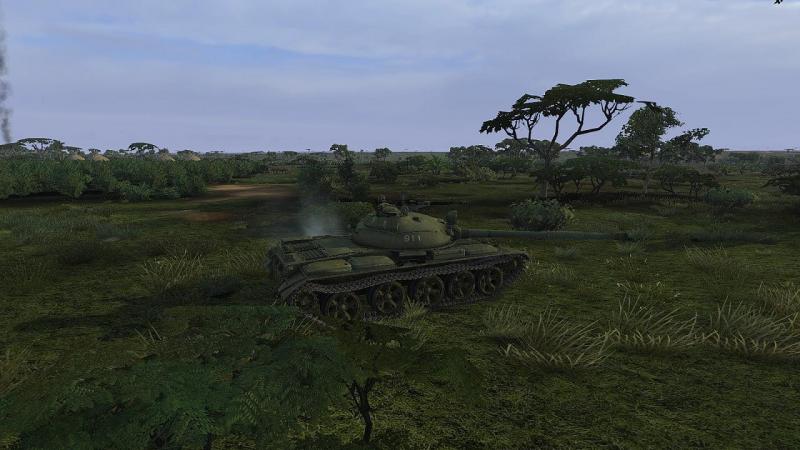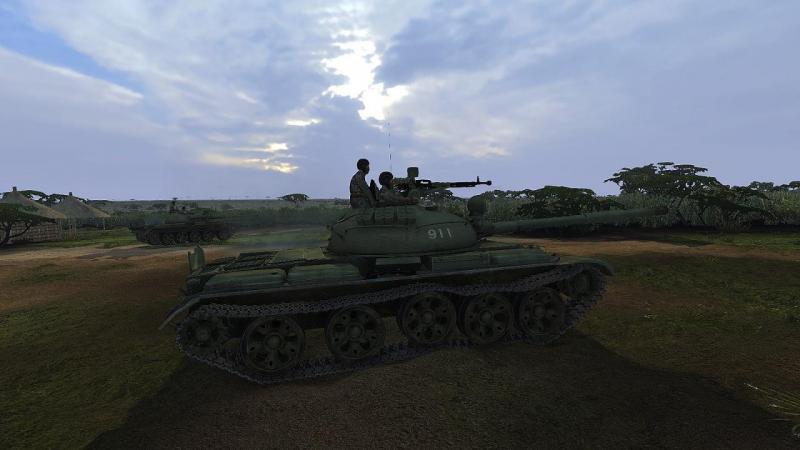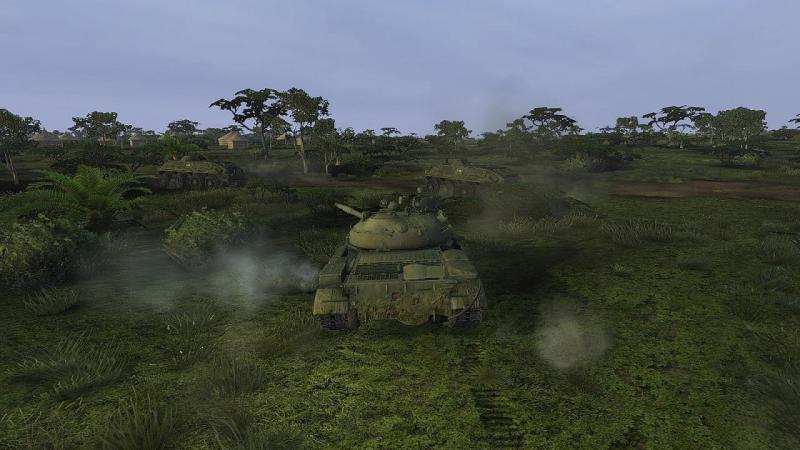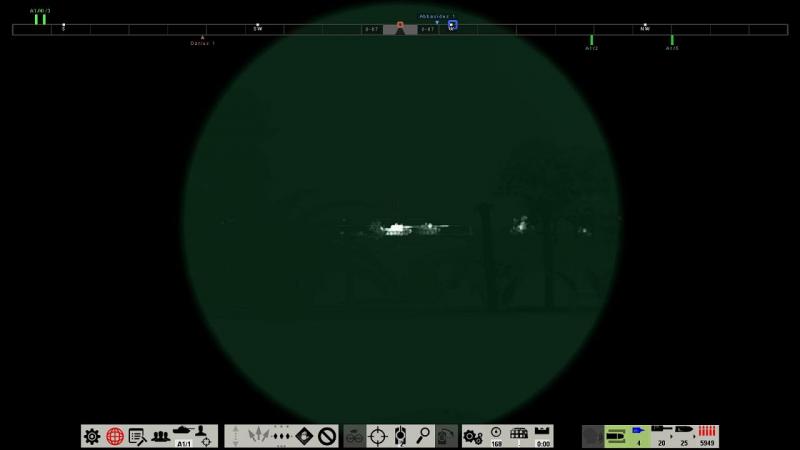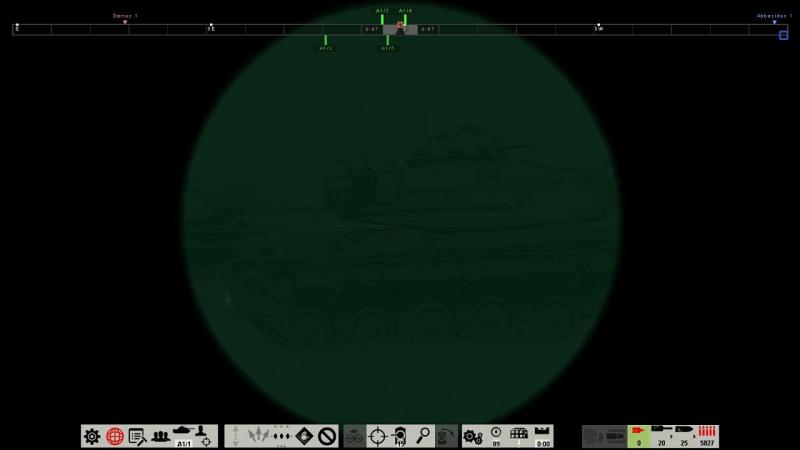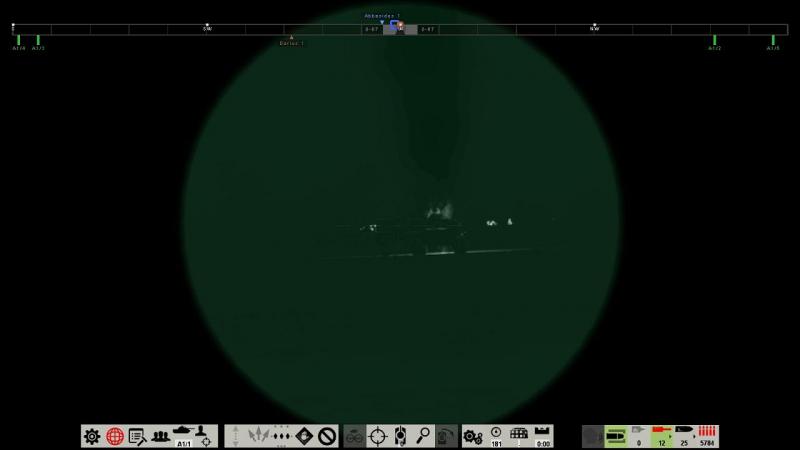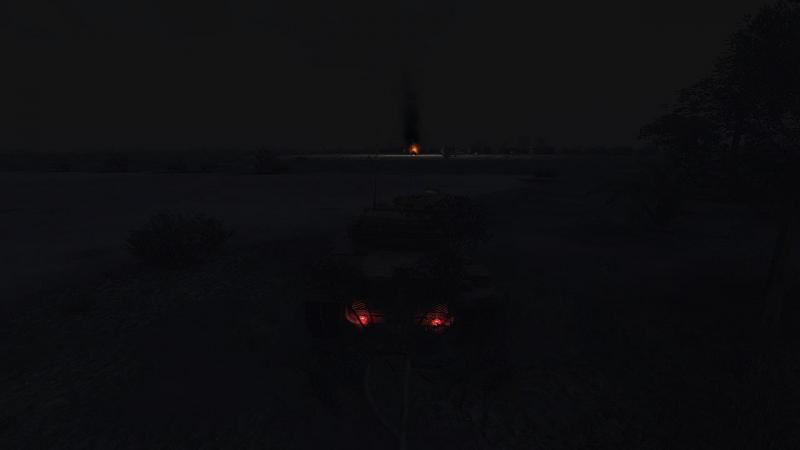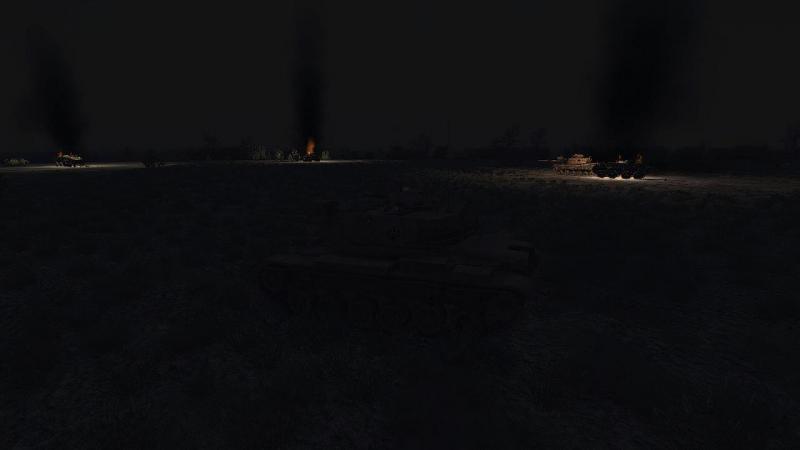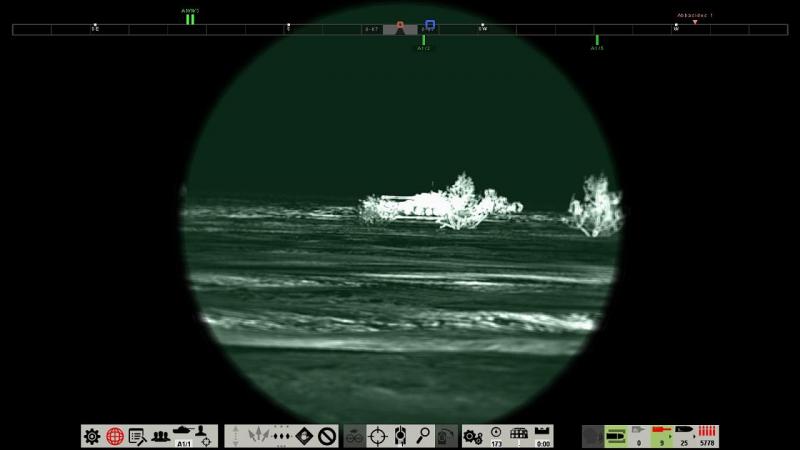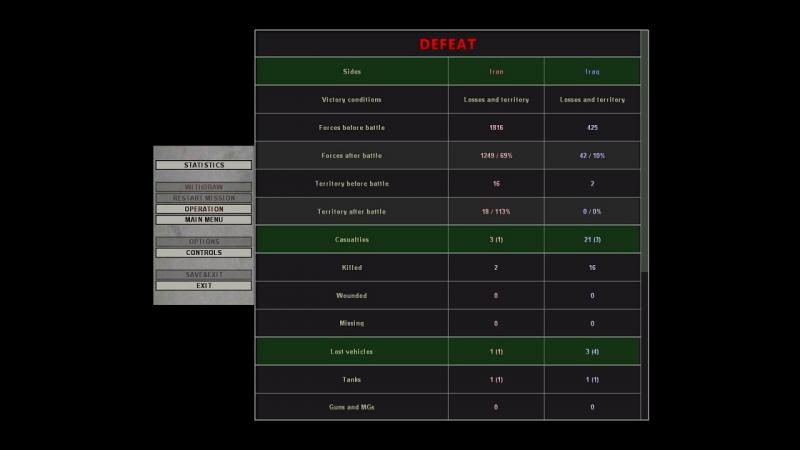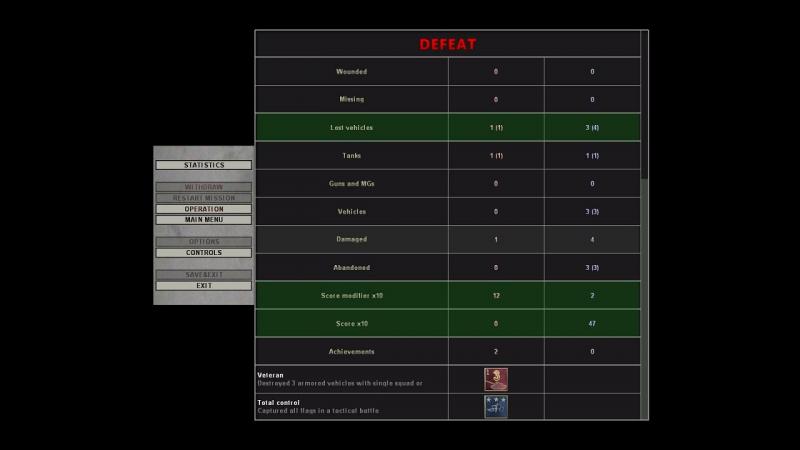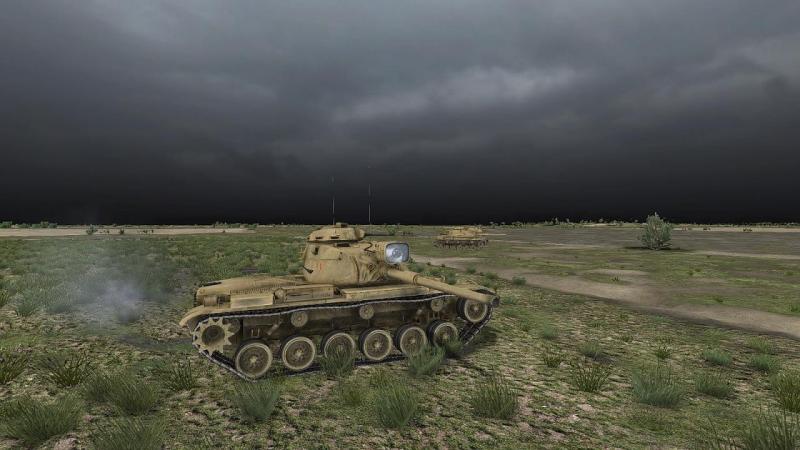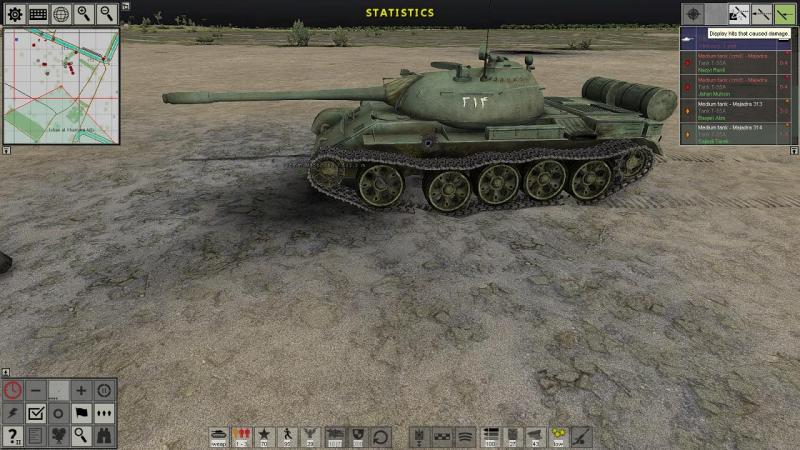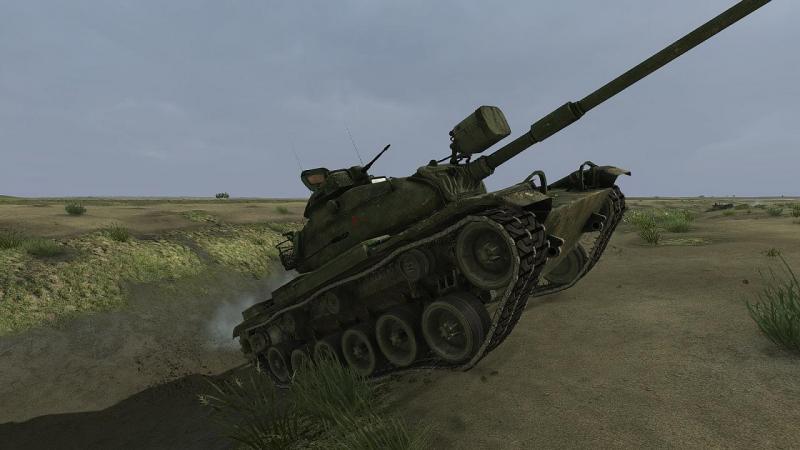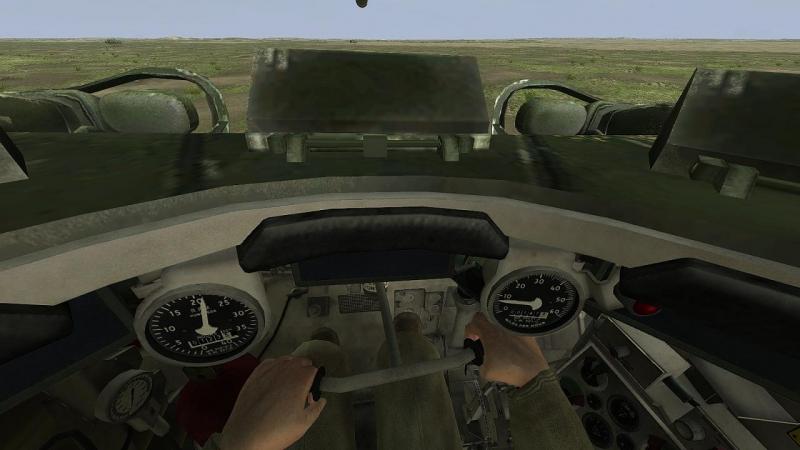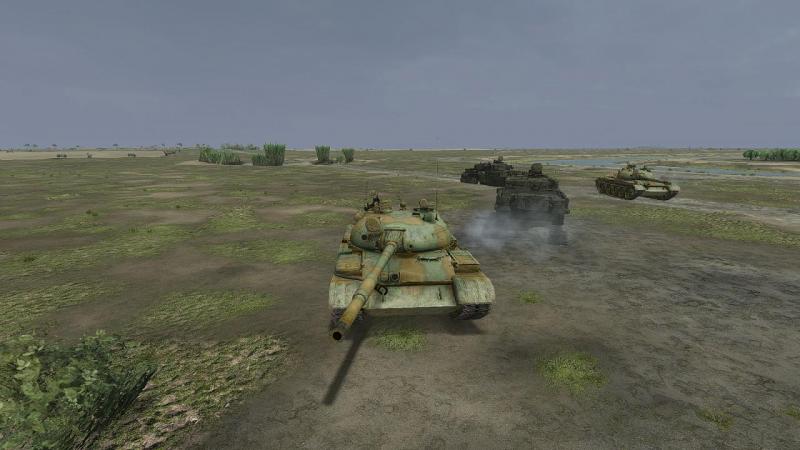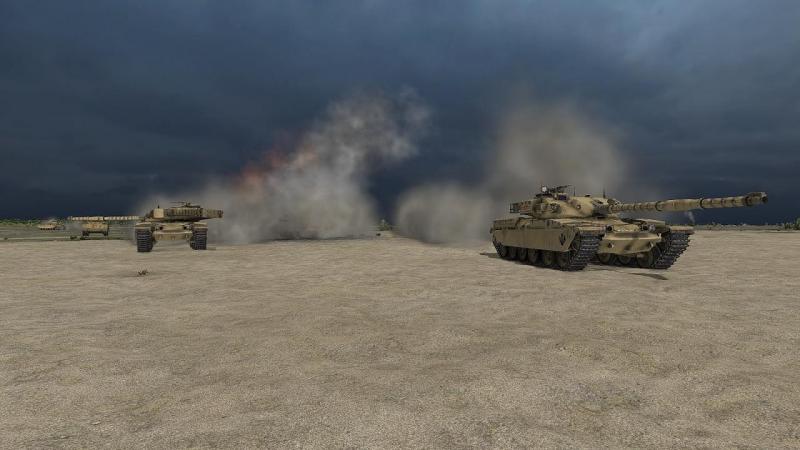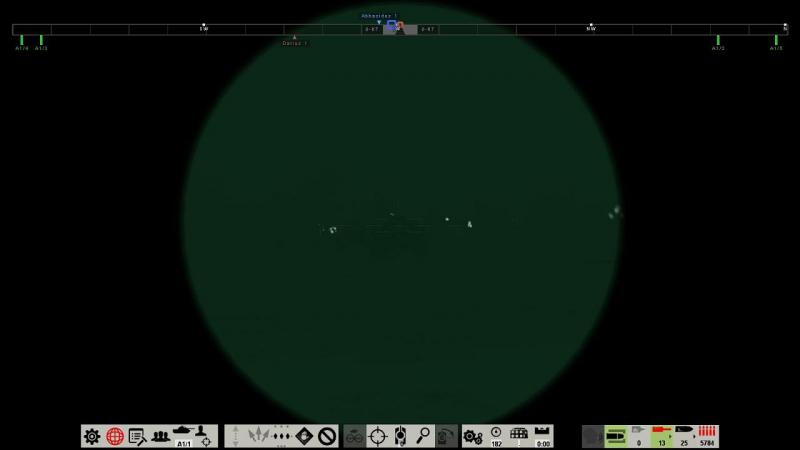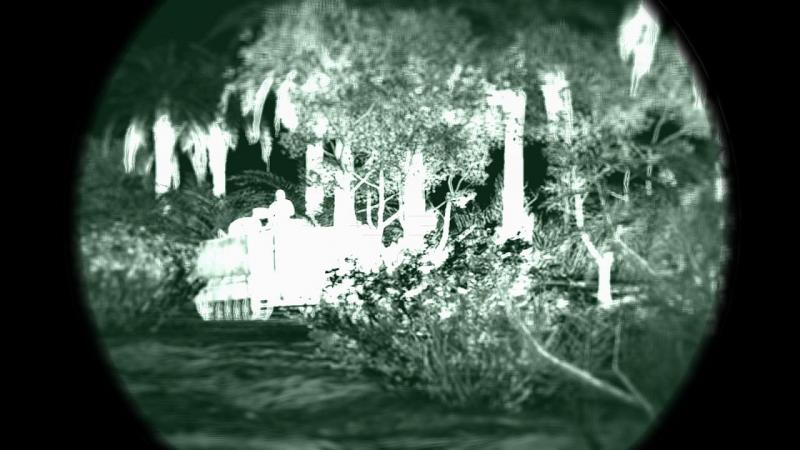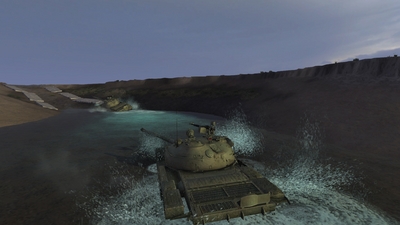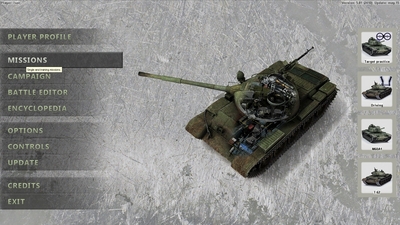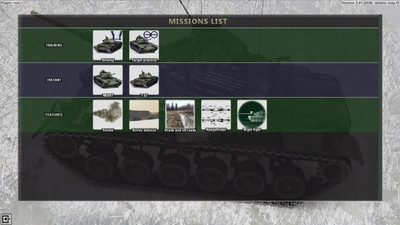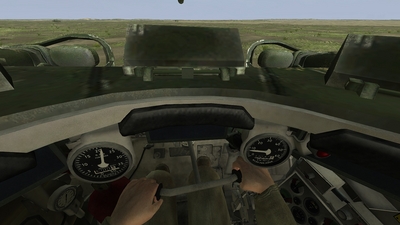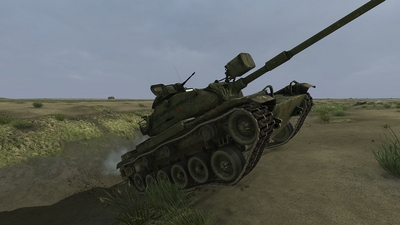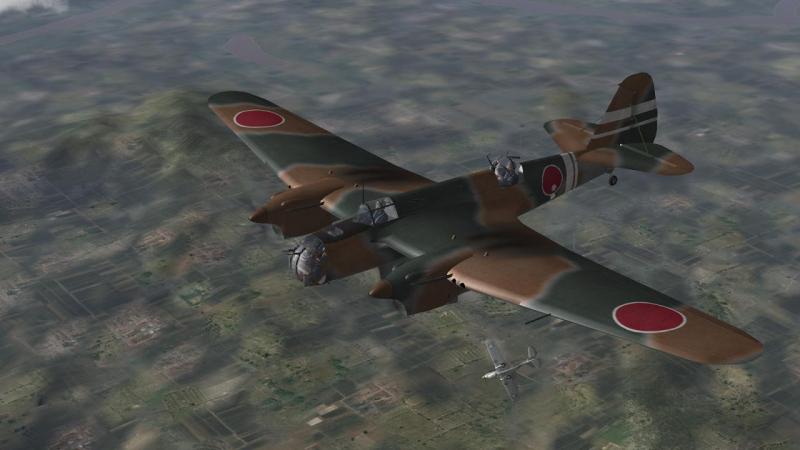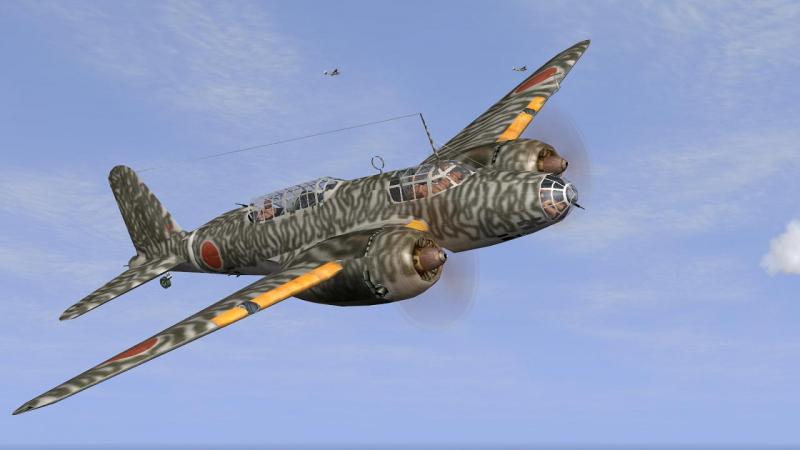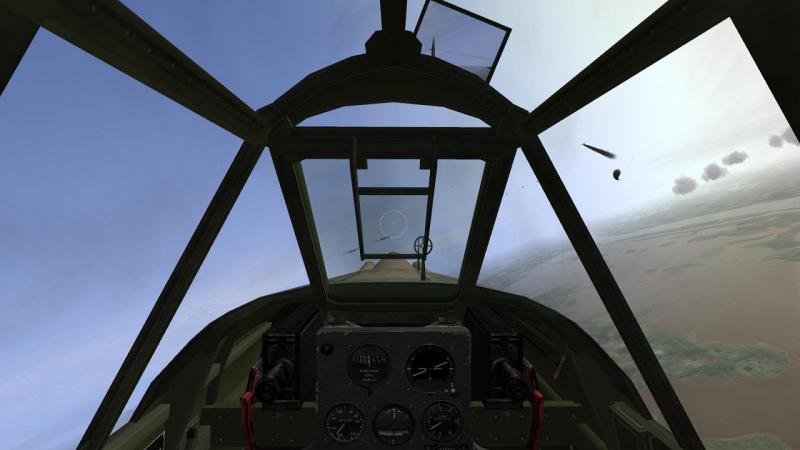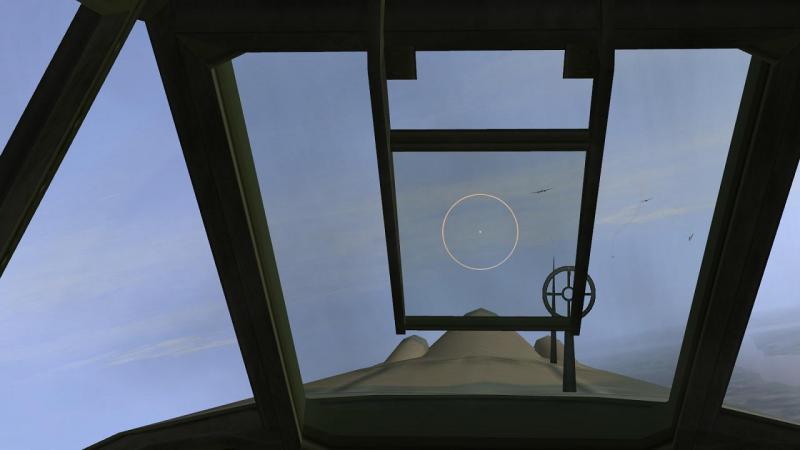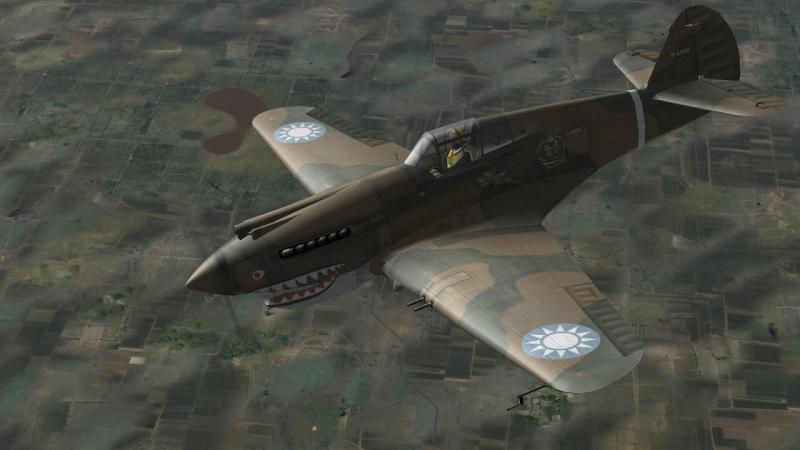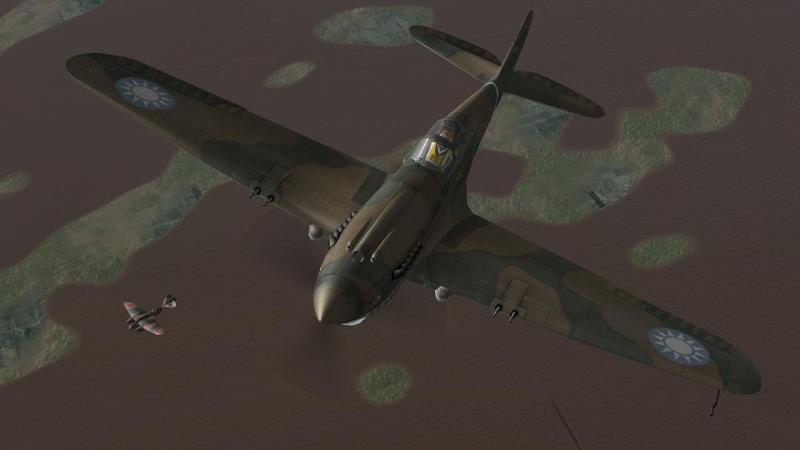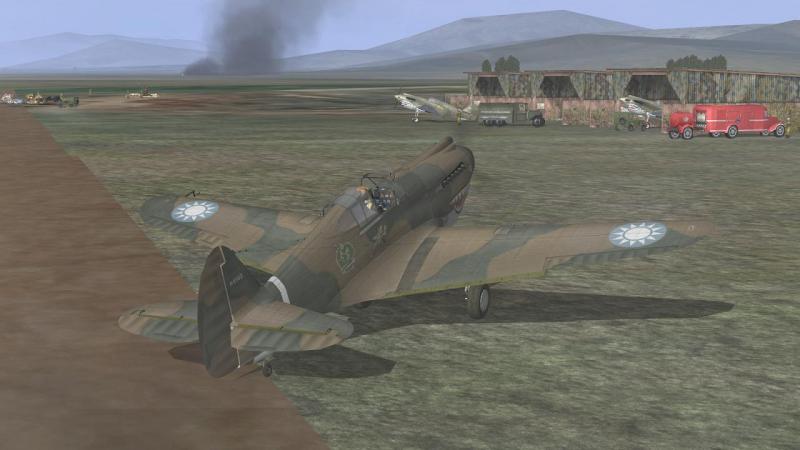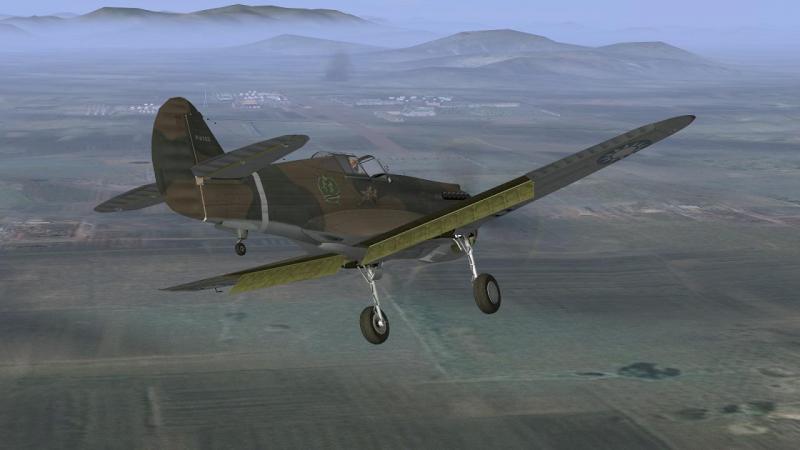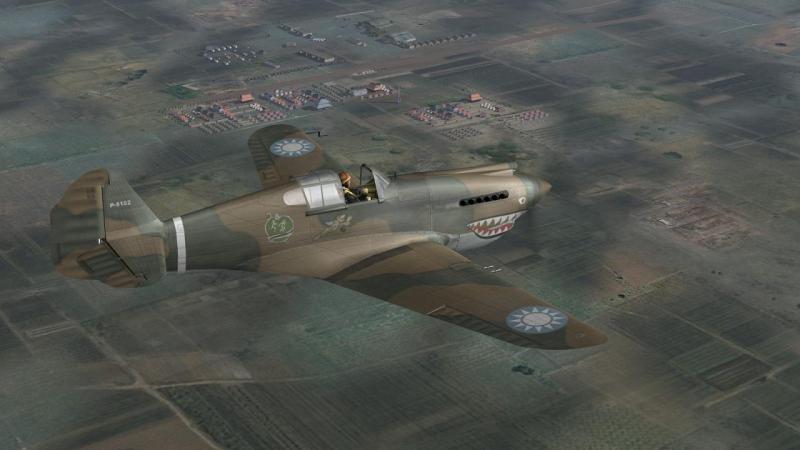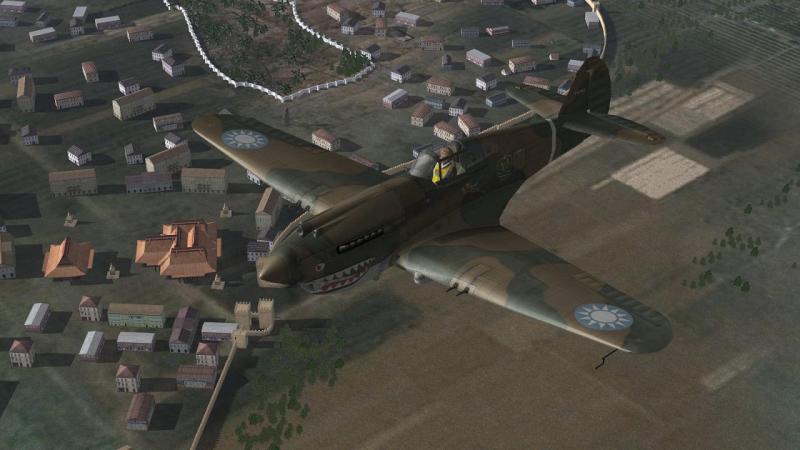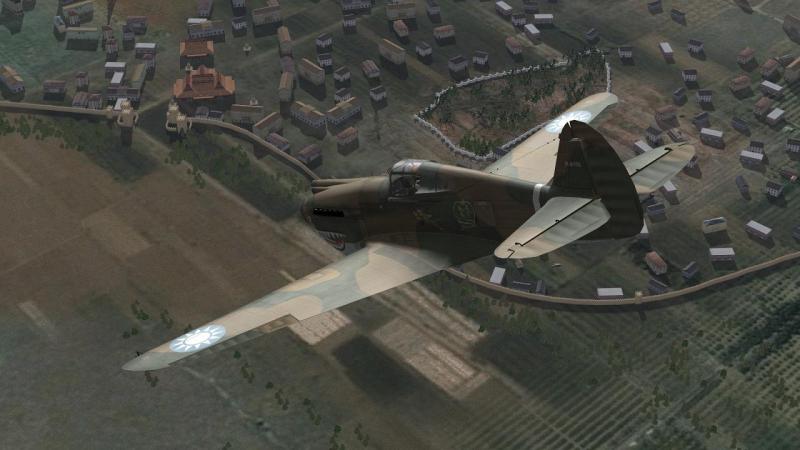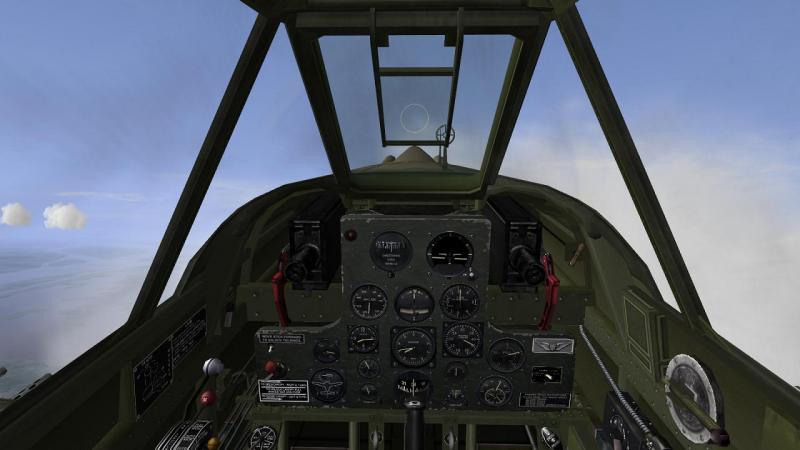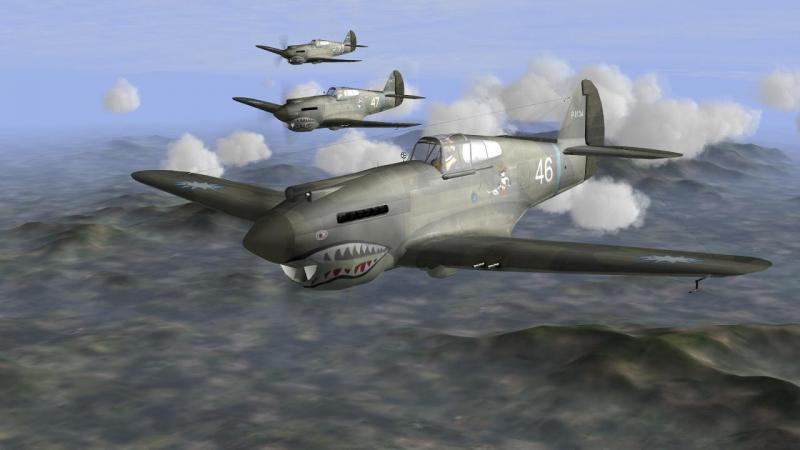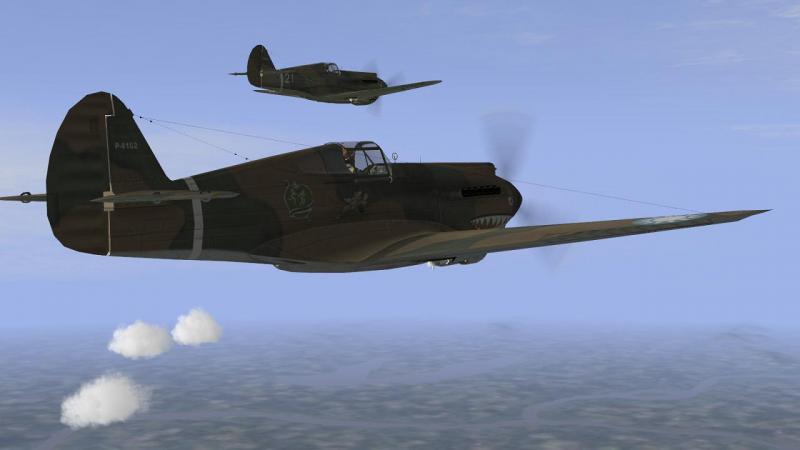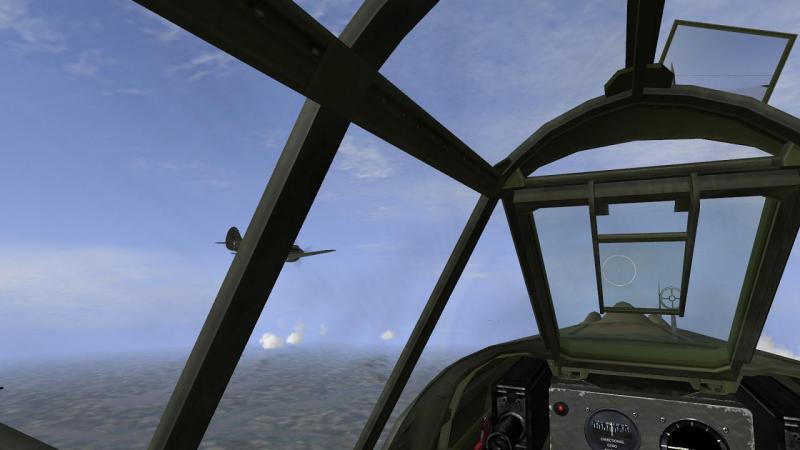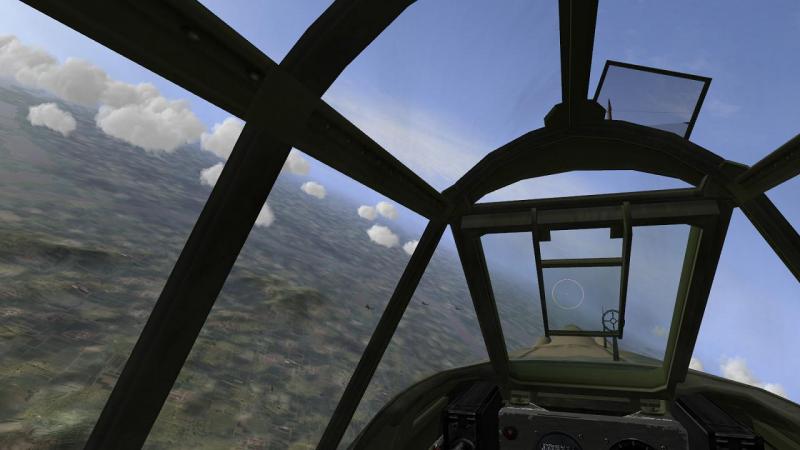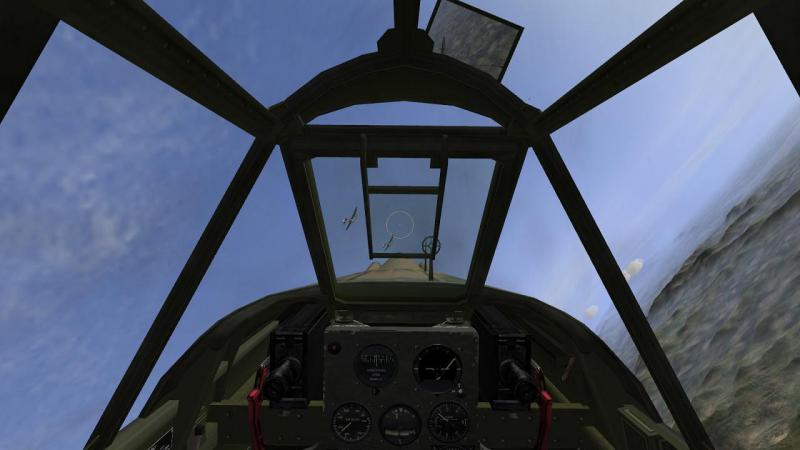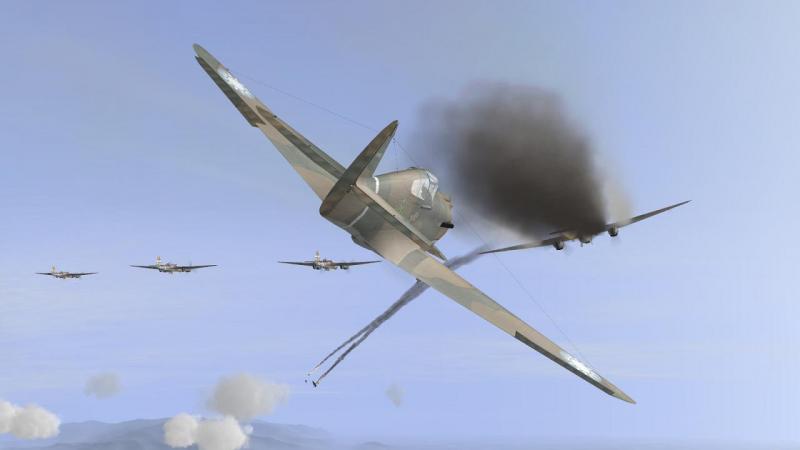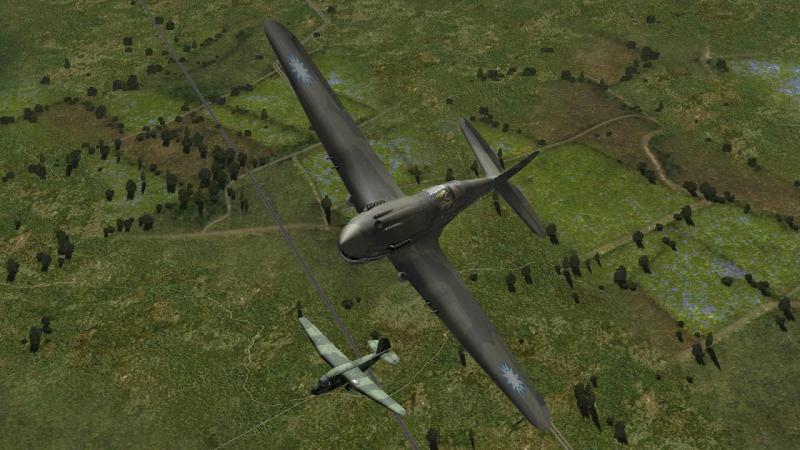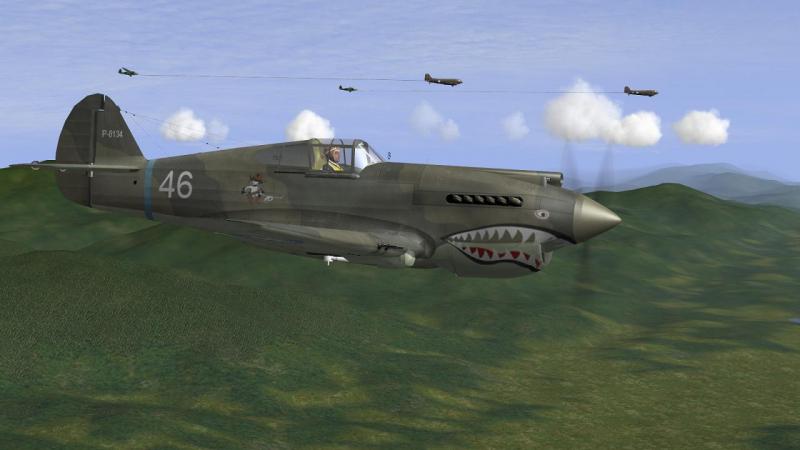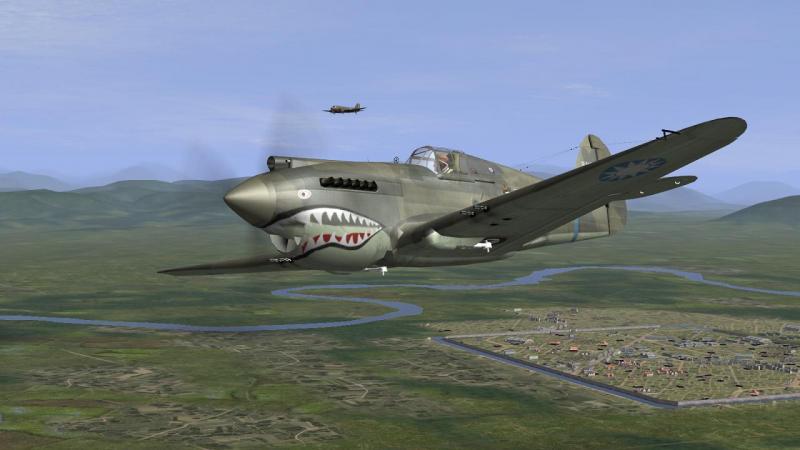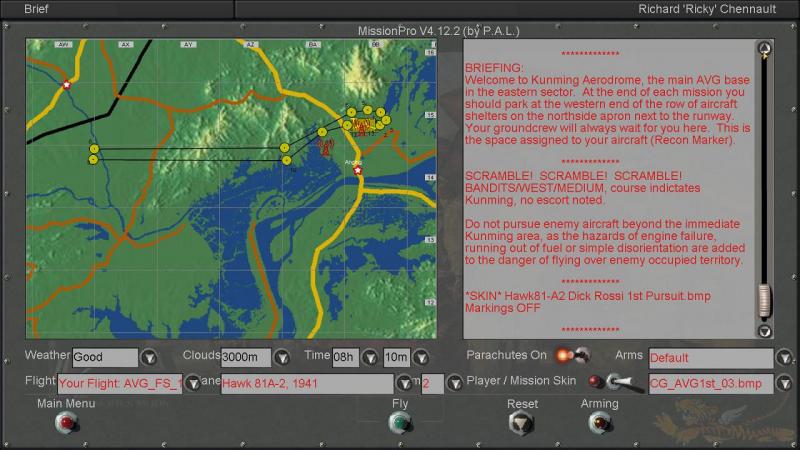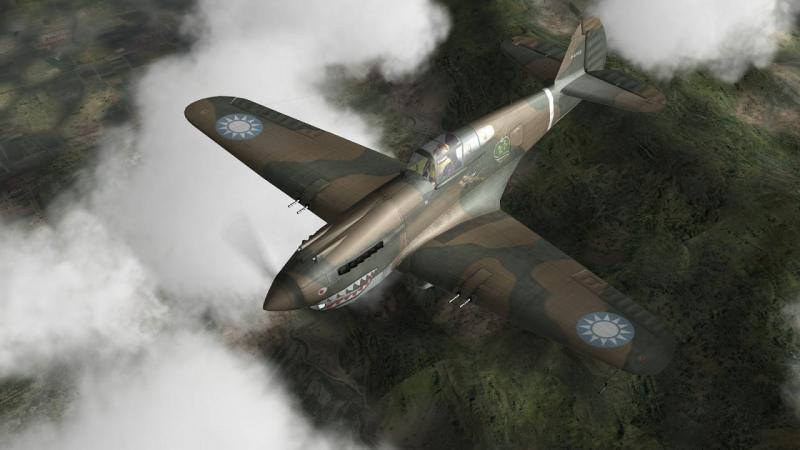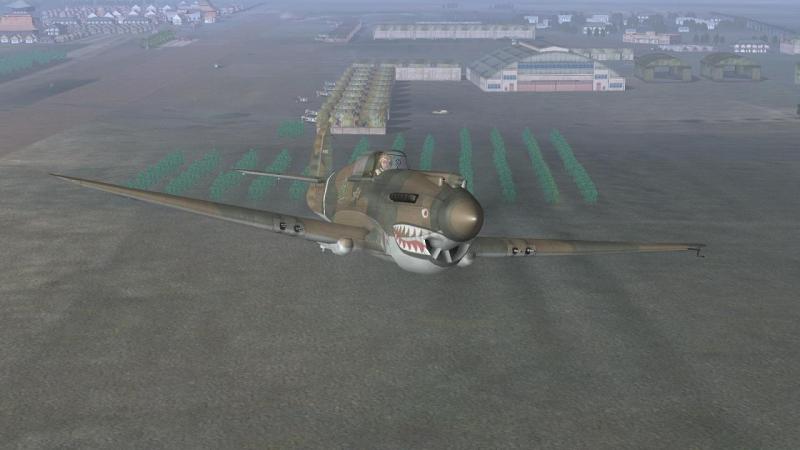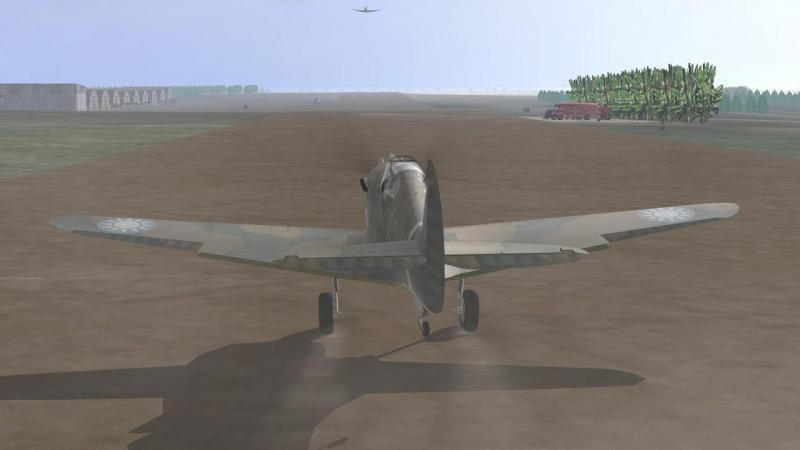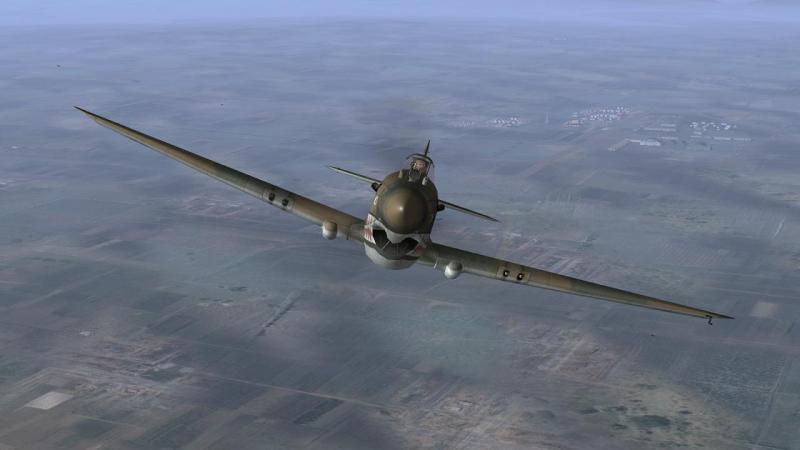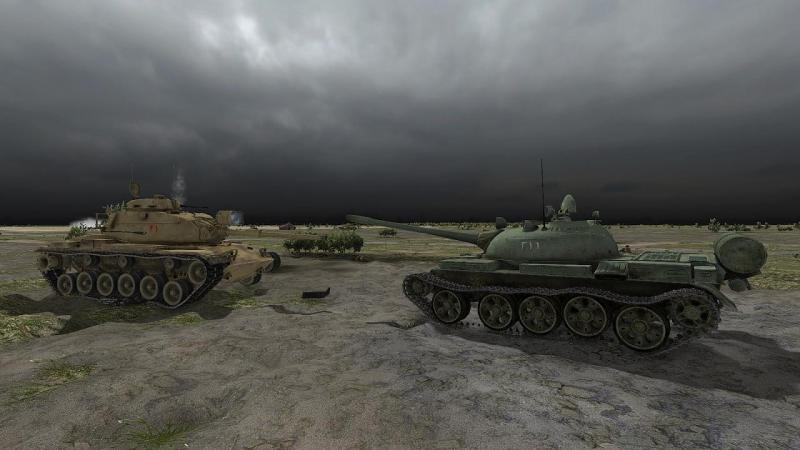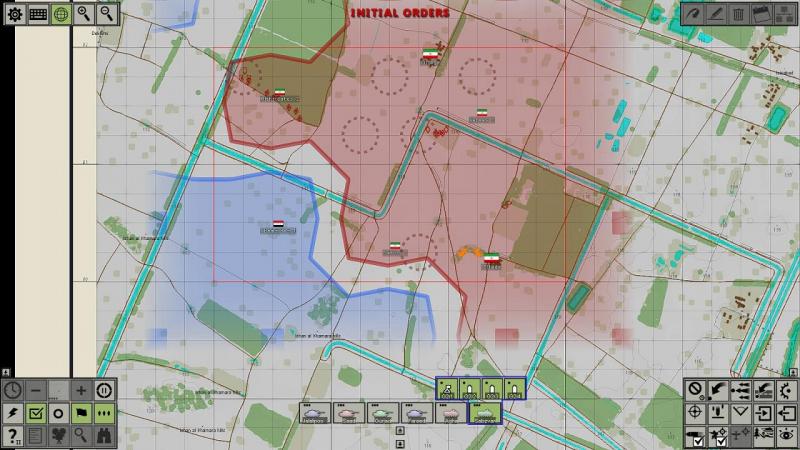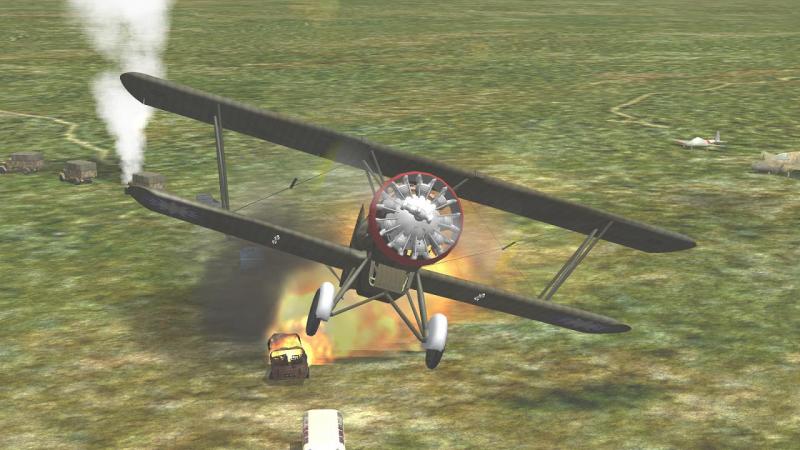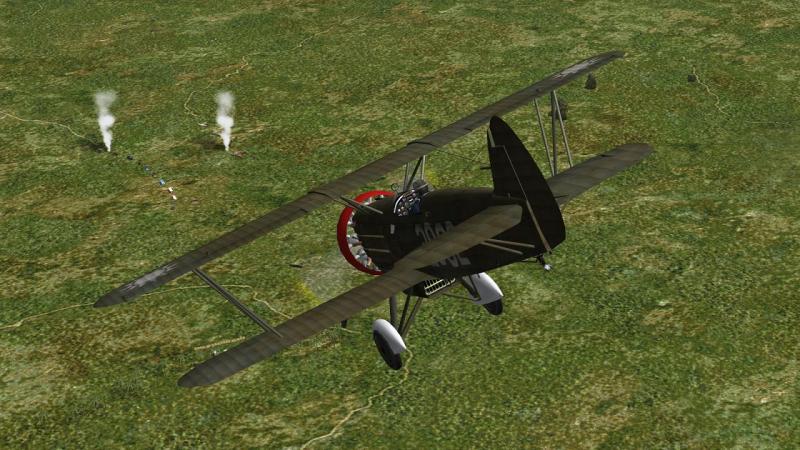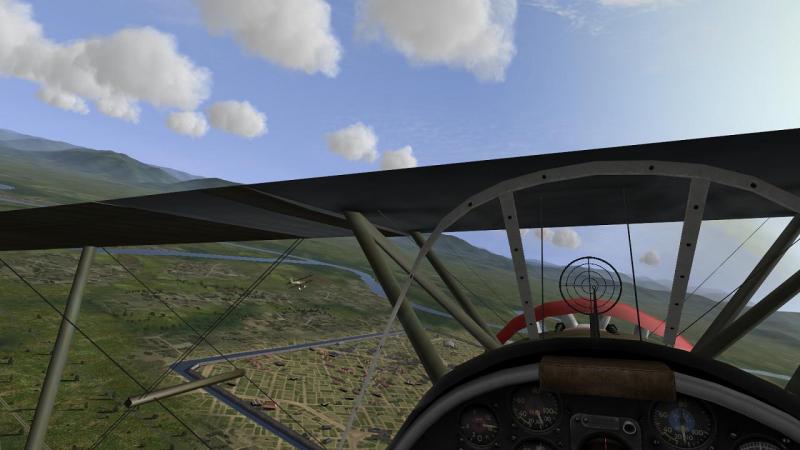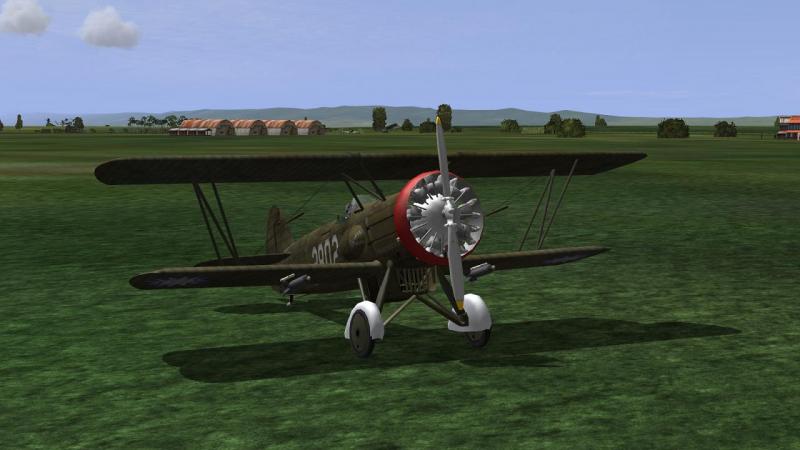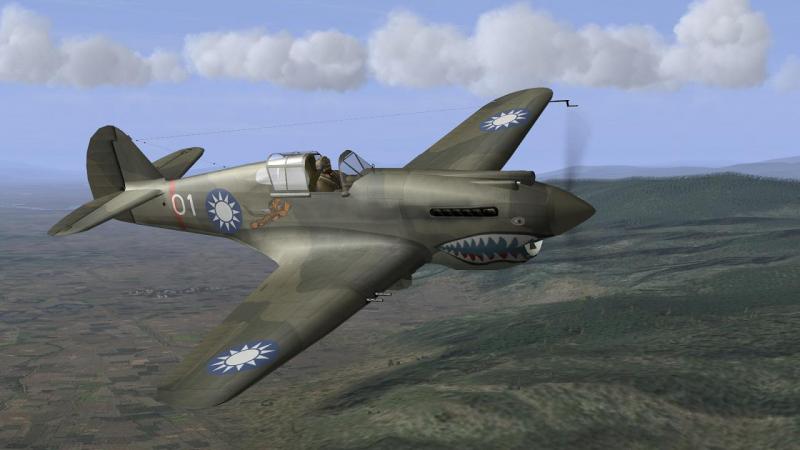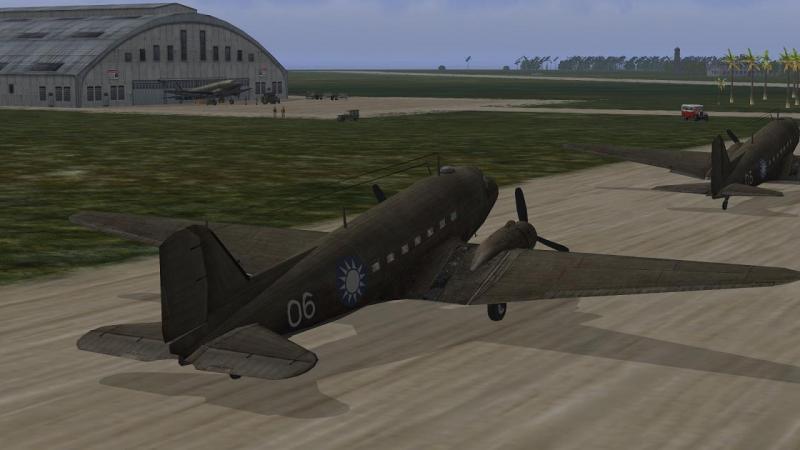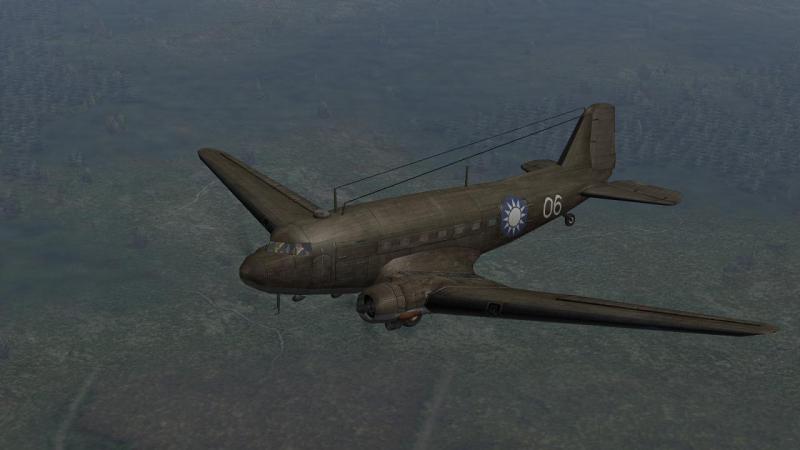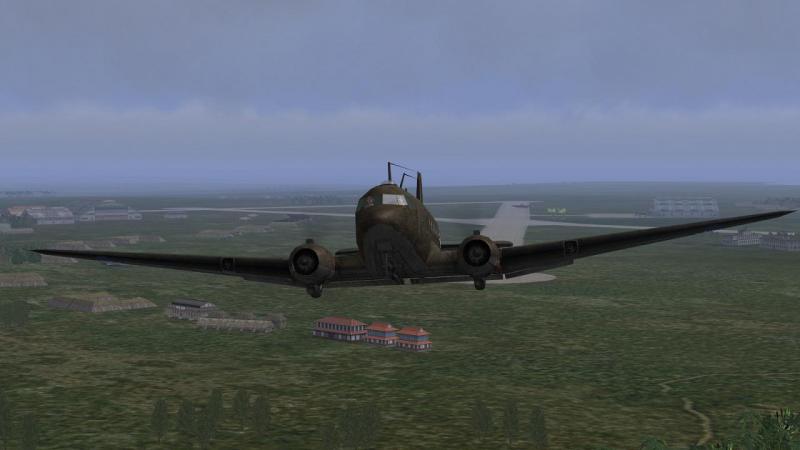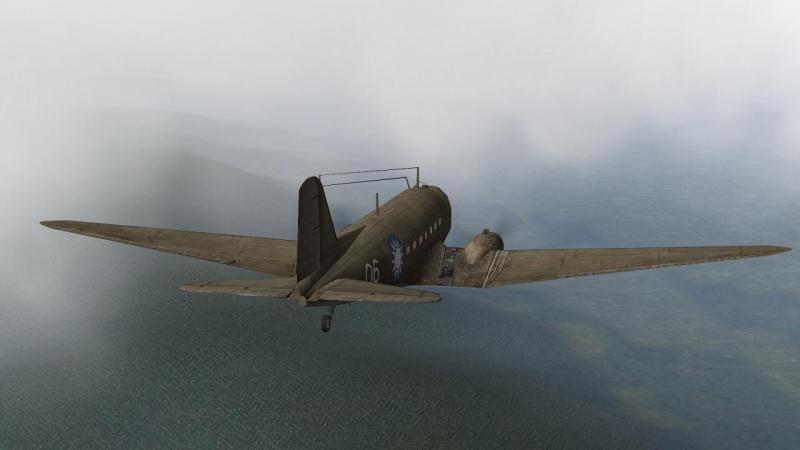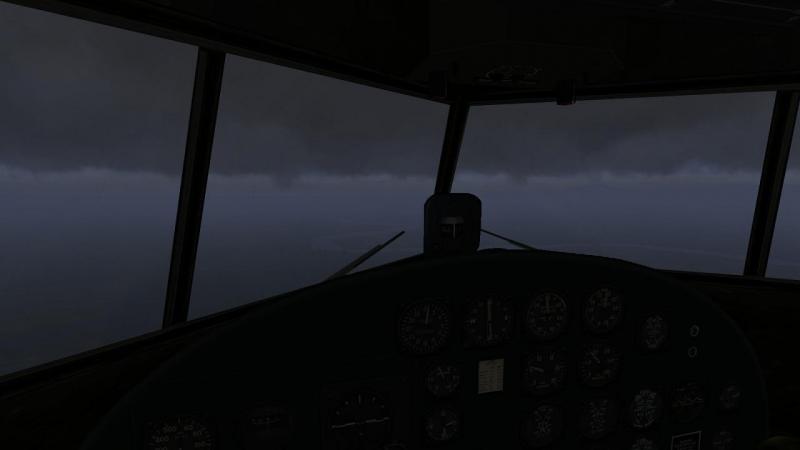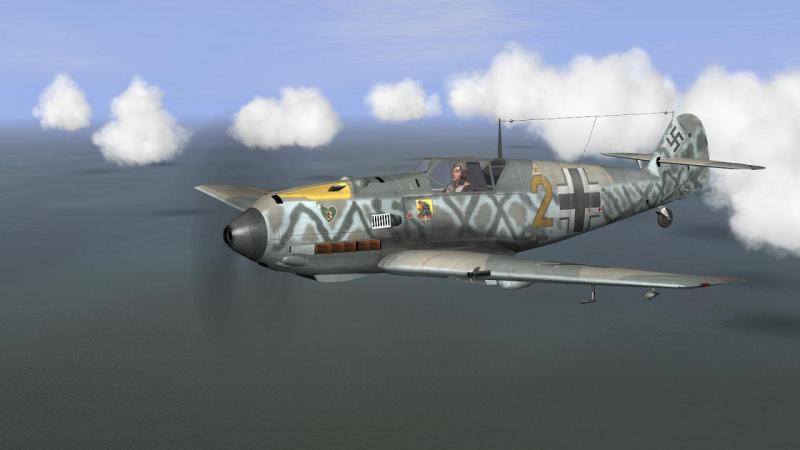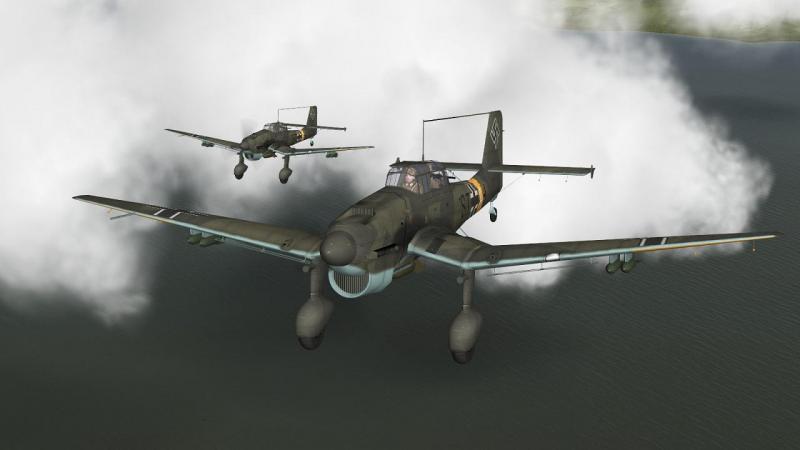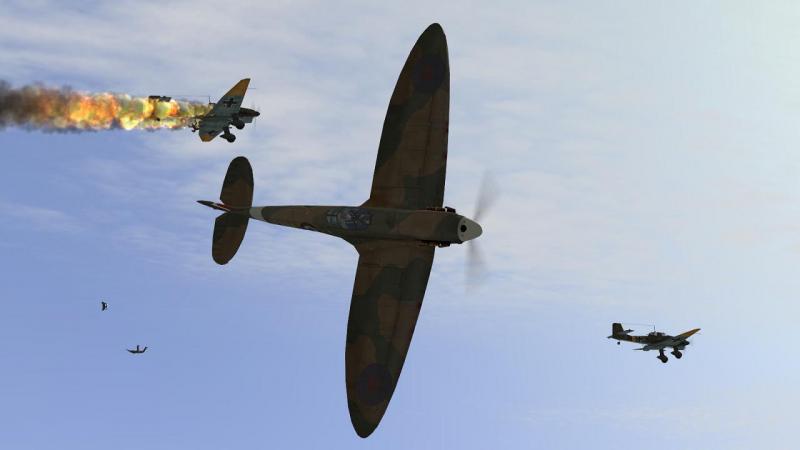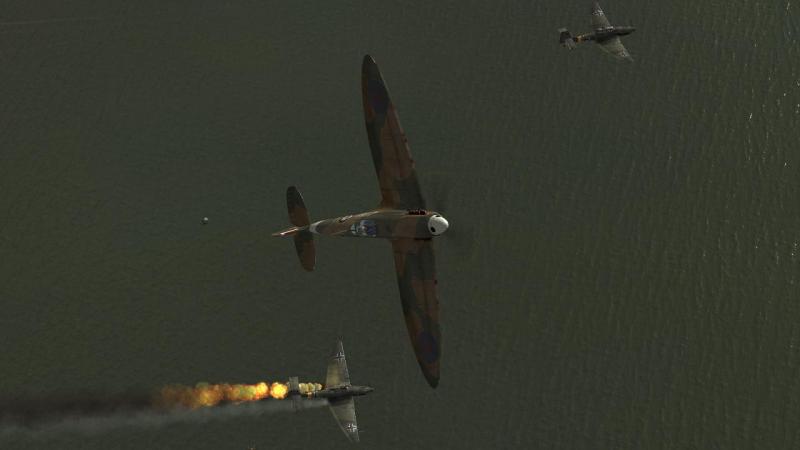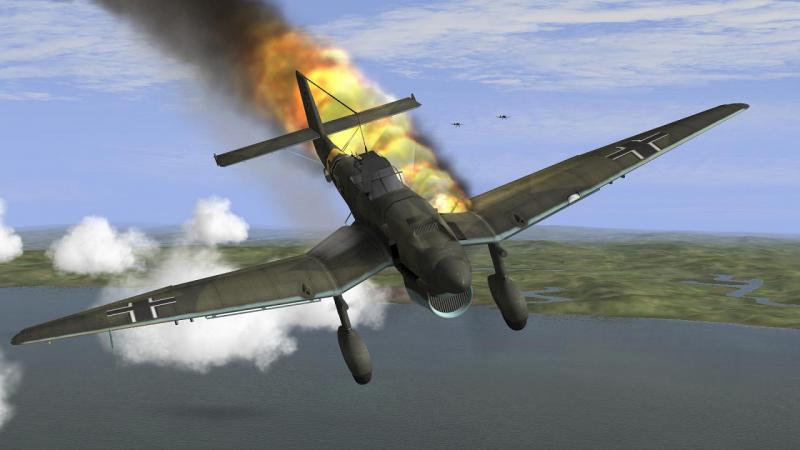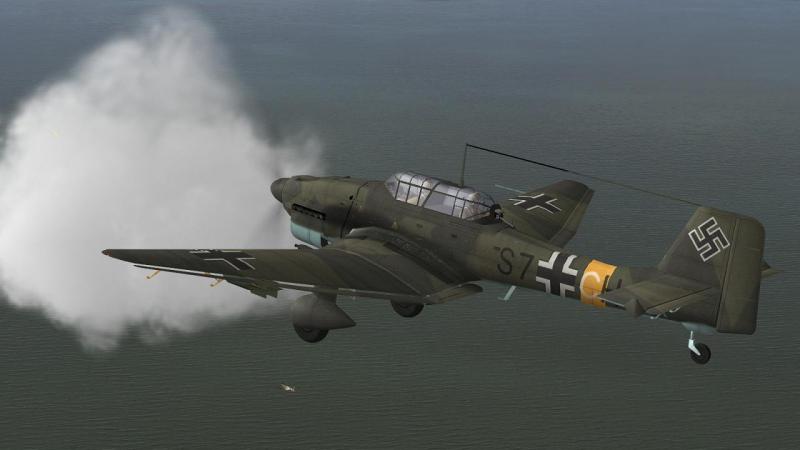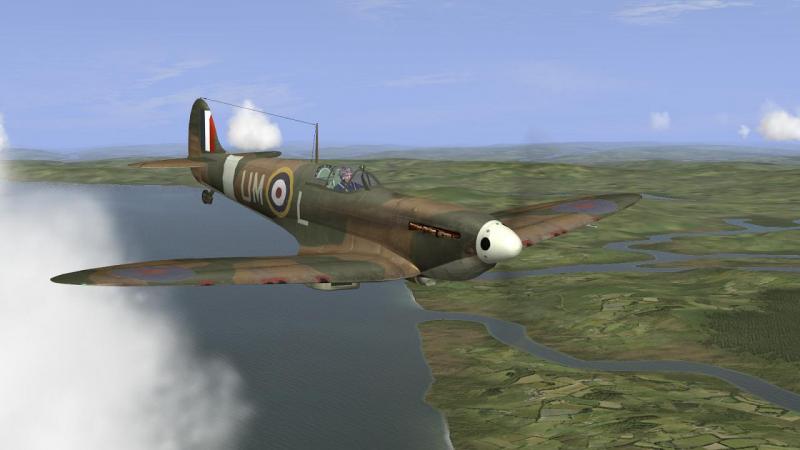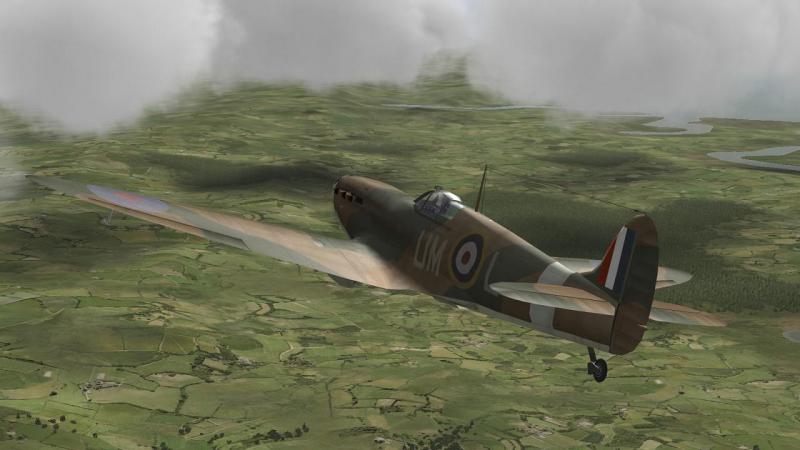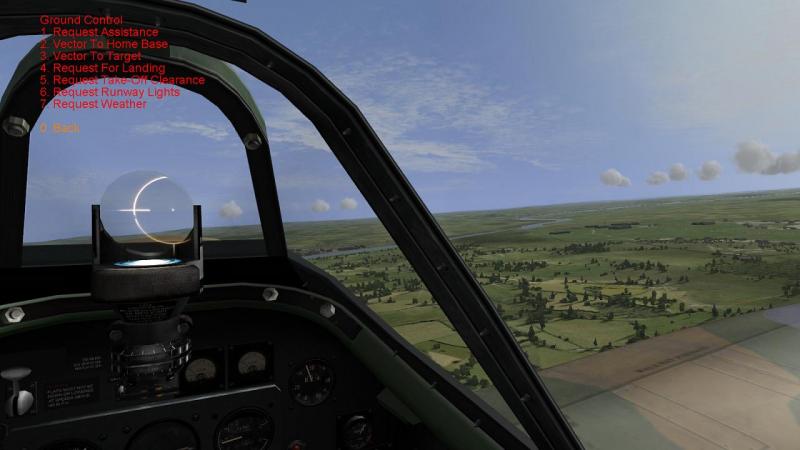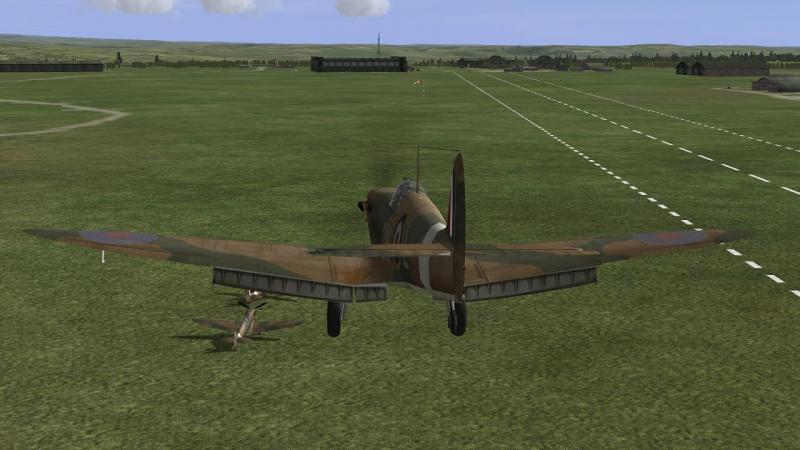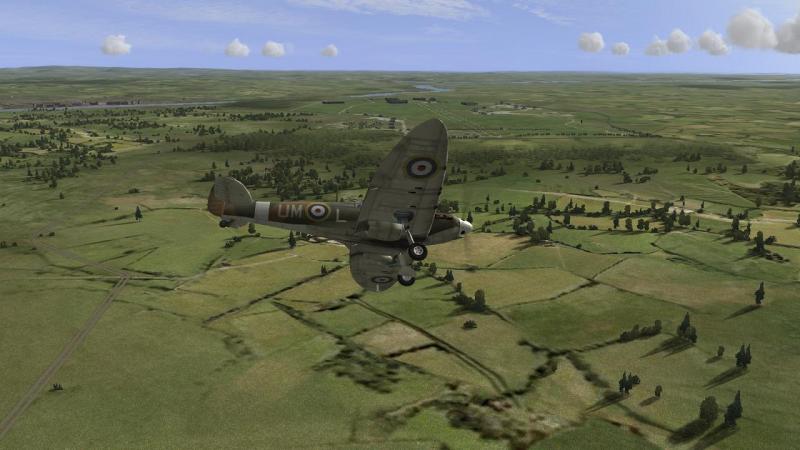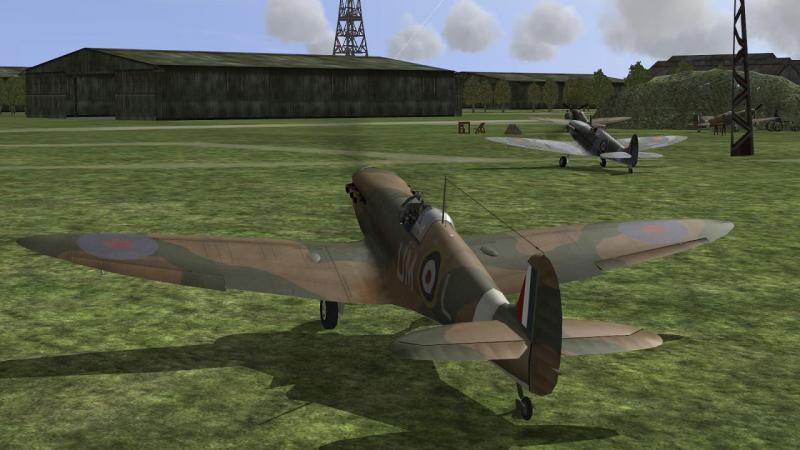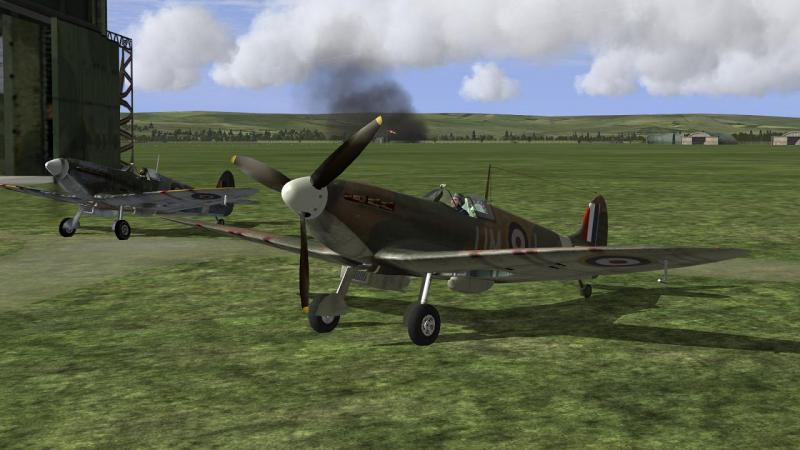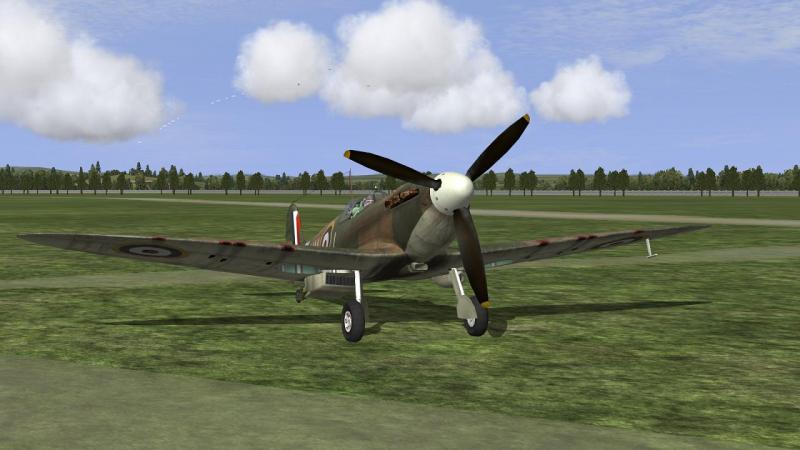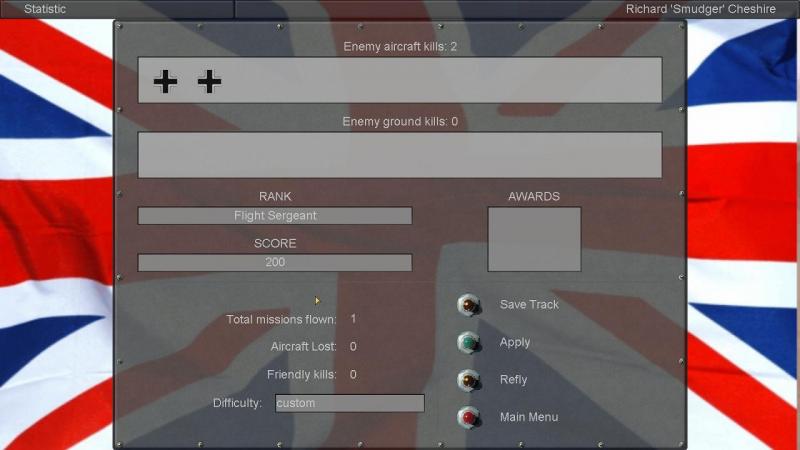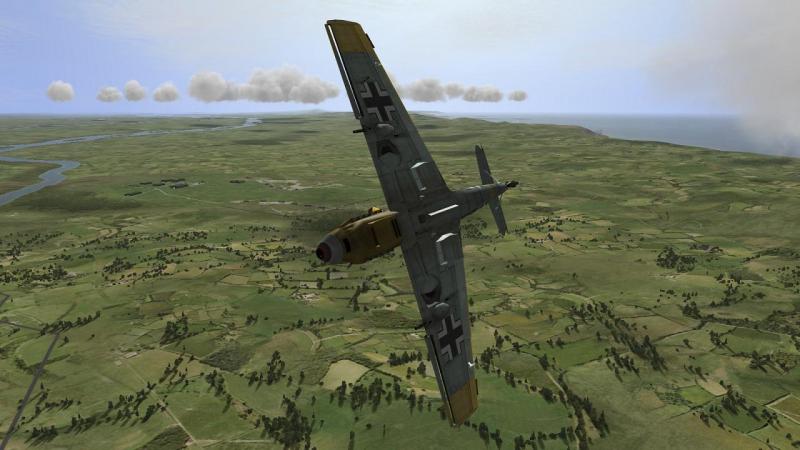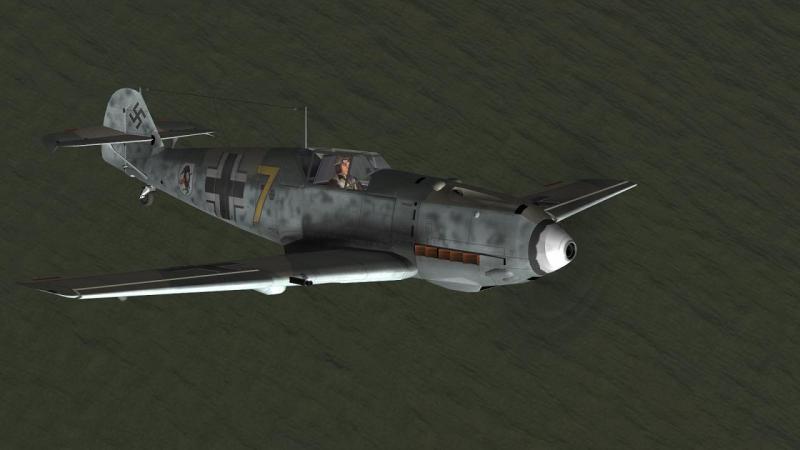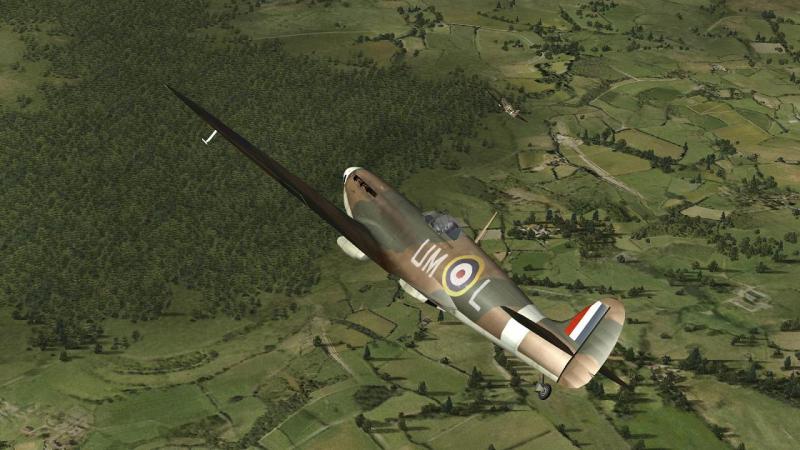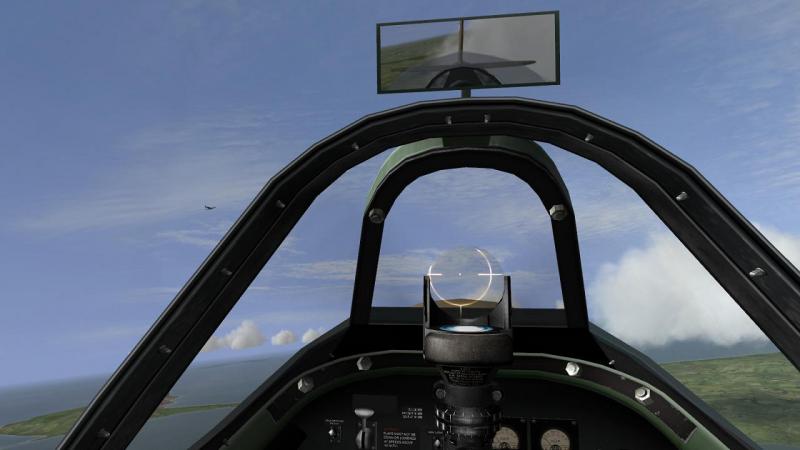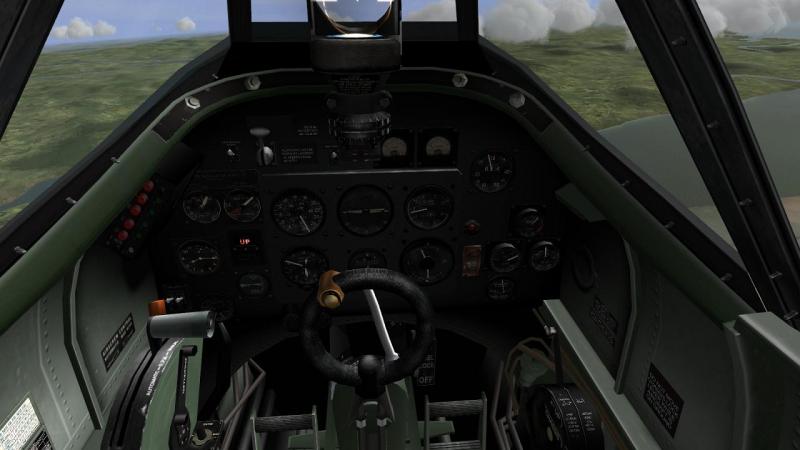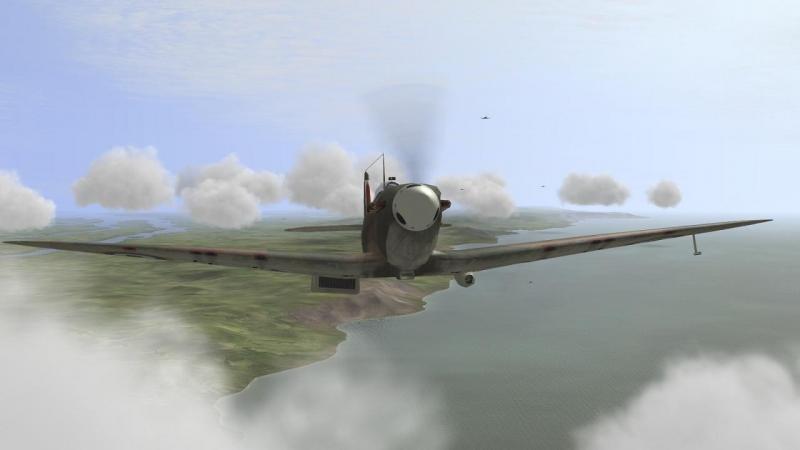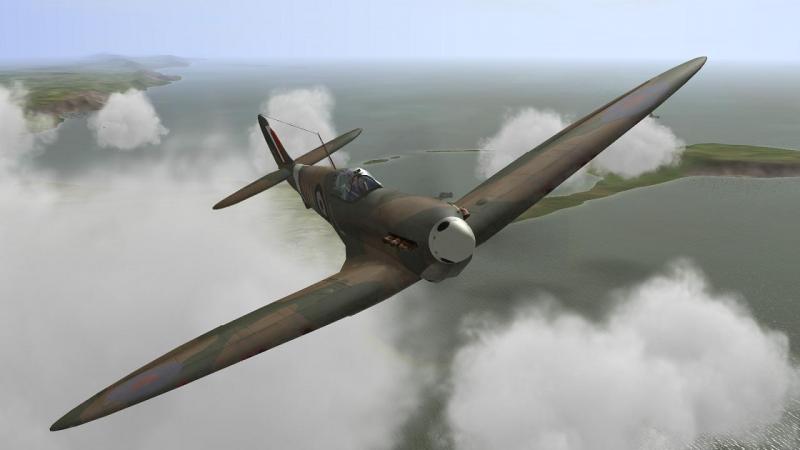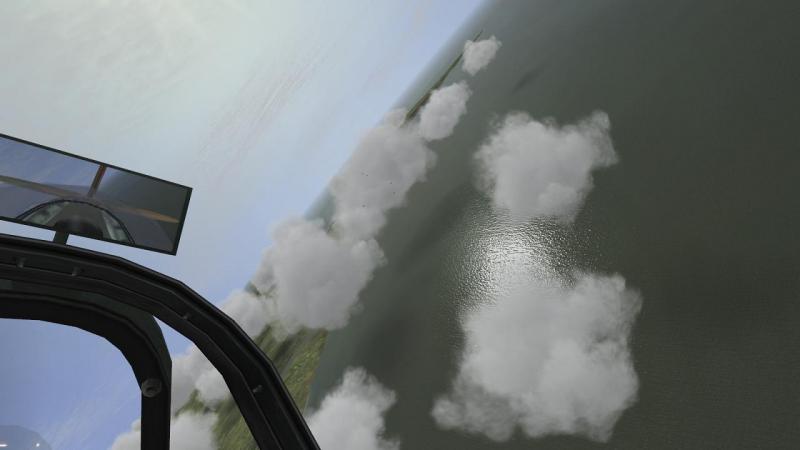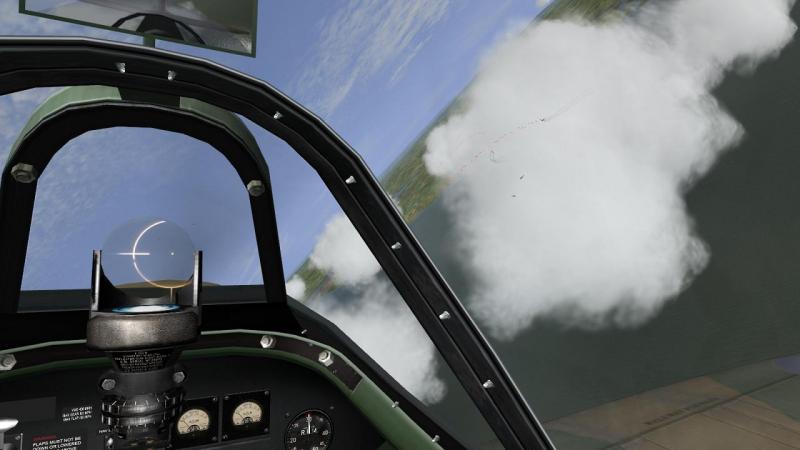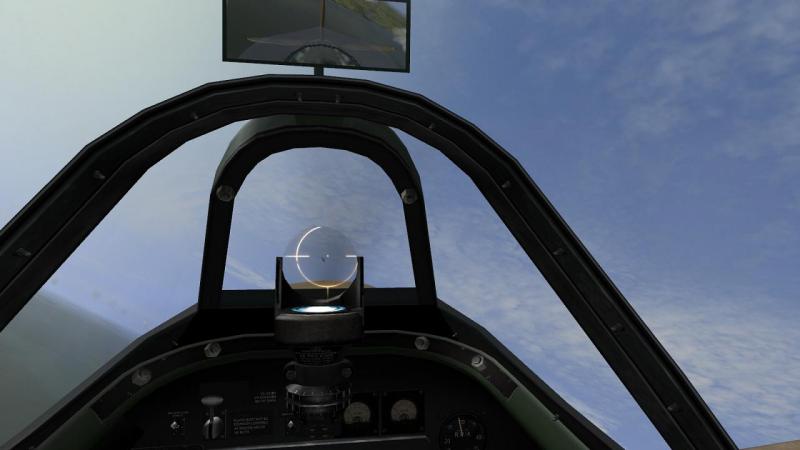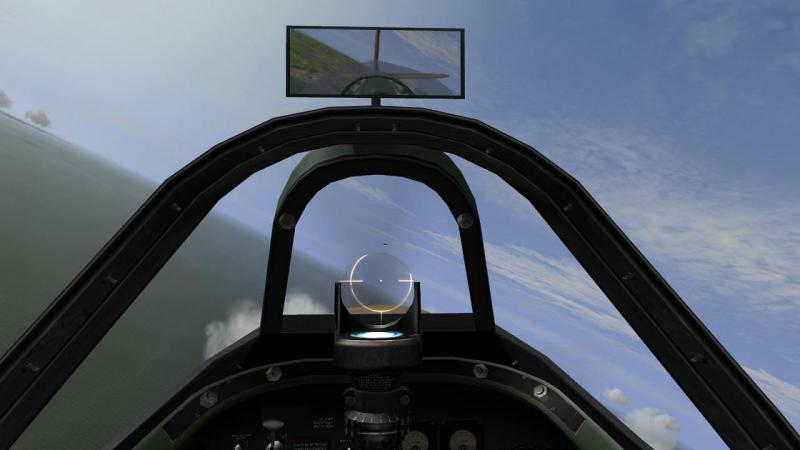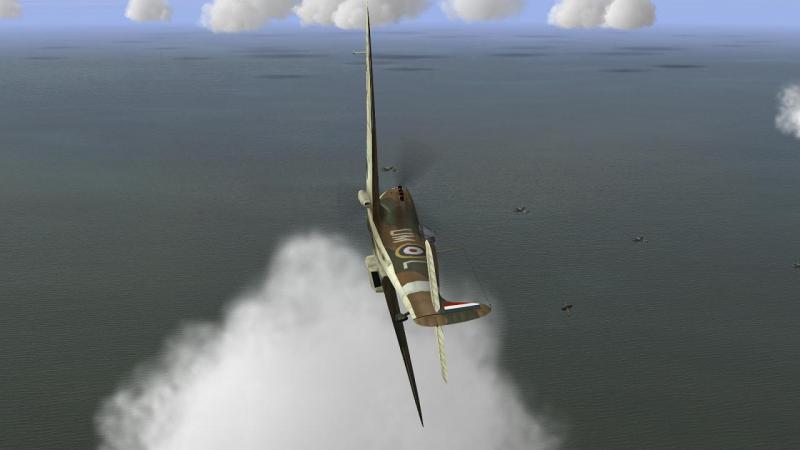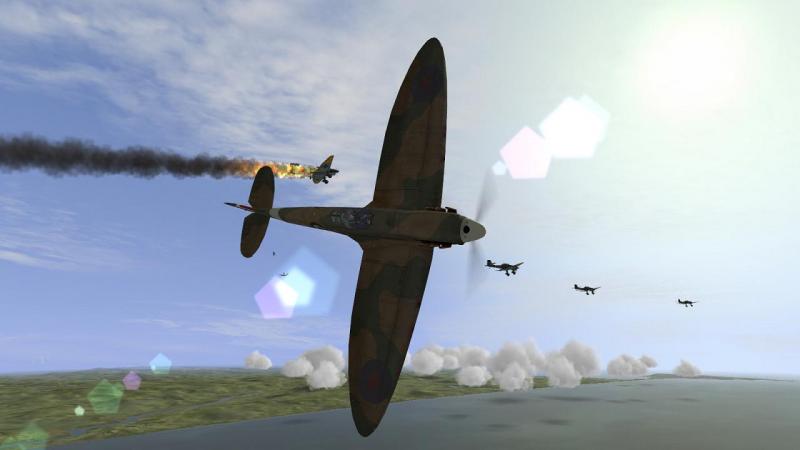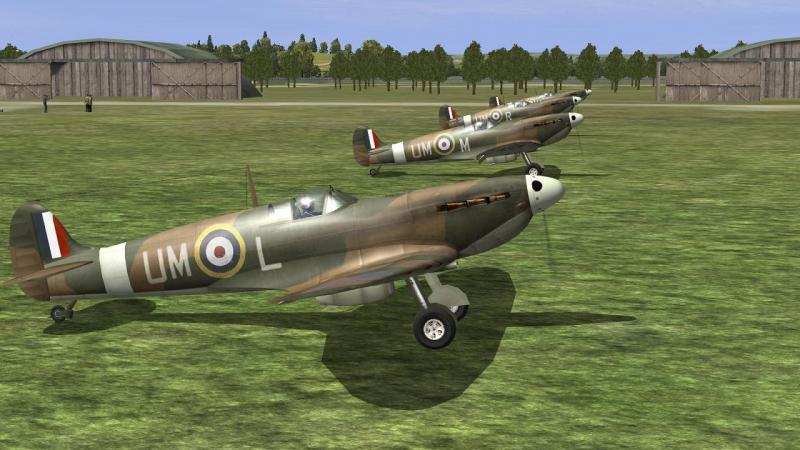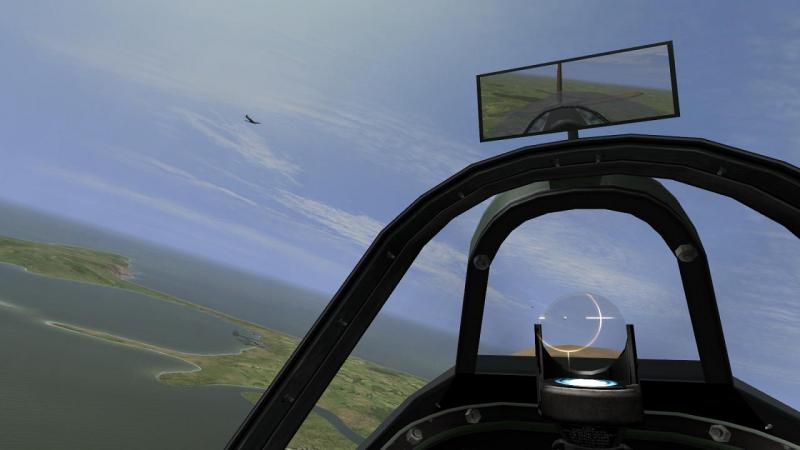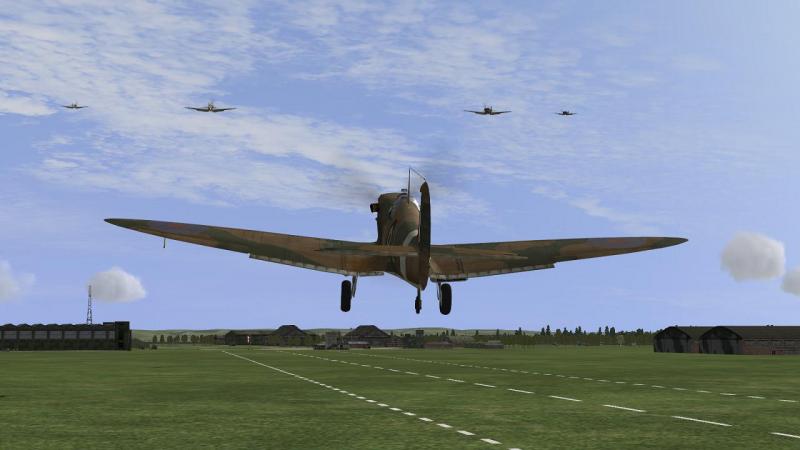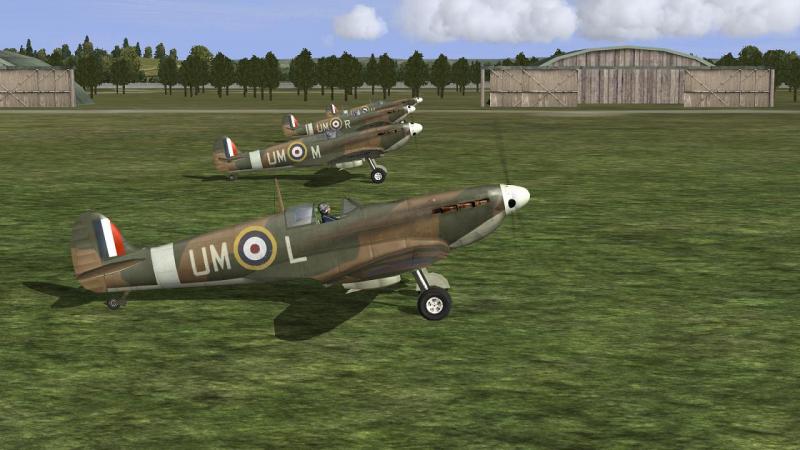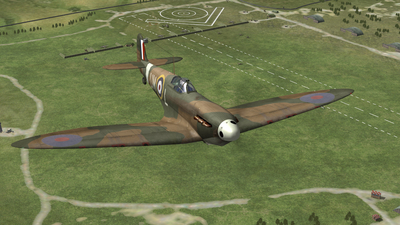-
Posts
3,749 -
Joined
-
Last visited
-
Days Won
7
Content Type
Profiles
Forums
Gallery
Downloads
Store
Everything posted by 33LIMA
-
The fourth option So far, I've continued to deploy my forces using the map, rather than the 3-d option that recently became available in the re-launched SABOW. So my first task on starting a battle is always to have a look around. The three M60s to the north were on the southern margins of the wood, just where I had placed them on the map. I backed a couple of tanks individually, further back into the woods. They had no cover from view or fire to their direct front but set back inside the woods, the three tanks had decent fields of view and were reasonably inconspicuous, able to see and kill before they were detected. After the first few rounds, it would be 'shoot and scoot'. Settling down behind the gunner's sight of one of these tanks, I scanned the open ground ahead, where the expected enemy attack could appear at any time. It was pretty barren, a good killing ground, just as I had planned. It had also proved to be a happy hunting ground for the enemy in the last mission! There were several knocked out tanks out there, including some of my M-60s from last time. Having been lost close to the front line, they had not been recovered. All part of SABOW's immersive dynamic campaign experience. Continuing to check, test and adjust my positions, I switched to the right-hand tank in the platoon, which was facing more to the west, where I had deployed our mechanised infantry to cover our right flank. From the gunner's sight, between the trees, I could see the M113 APCs, facing enemy territory out to our west. I next checked the positions of my five-tank platoon, and backed them individually behind the treeline, closer to the irrigation ditch to their rear. Then I switched back to the other tank platoon and settled down to wait. I'm not sure if it was Clausewitz or another German general who said that in war, the enemy usually has three options, of which they will generally choose the fourth. So it was to be on this occasion. The Iraqis resolutely refused to drive into my more or less well-laid trap. At least, not right away. For a time, it was quiet. Then, suddenly, there was a contact report. The mech infantry had spotted movement - but it wasn't where expected, down to the south. It was way up on our western flank! Confusingly, at that point there was an offer of a cease fire. I ignored this, and watched my right flank with some anxiety. I was naturally concerned about being attacked over there, where our mech infantry lay. But I was also reluctant to give up my area ambush plan...at least, until I really had to. Of course, if I didn't react quickly enough, I might be too late. Decisions, decisions! I decided to take a chance. I watched and waited a little longer. I think they call this 'Developing the situation', in US Army Field Manuals. It went quiet for a while, and I was beginning to think it was just a random sighting. But after a few minutes more, there was another contact report. Enemy infantry, again. And for the second time, they were reported to be coming our way. Was this a feint from the west, ahead of the attack we had expected from the south? Whatever it was, would I wait and see if our mech infantry could hold it, before committing my heavy armour? There was some covered ground on our right flank - where the enemy had been first sighted. Some of them could get quite close before I saw what was coming. I decided my five-tank platoon to the east could still 'man the fort', while I would take my three-tank platoon in a loop back through the woods and in come in behind my mech infantry. If the bad guys were mounting a serious attack from that direction, they were going to meet a little more than a few infantry weapons. I ordered column formation and led the three M60s back into the woods. ...to be continued!
-
An uncertain turn of events in a later round in my Iran-Iraq War campaign! My first M60 campaign in SABOW is proving to be something of a roller-coaster ride. And an expensive one! Back in daylight after the opening mission during the hours of darkness, we seemed to be doing quite well in mission #2, playing our part in the Iranian counter-offensive against the invading Iraqis. The culmination of my plans in that mission was a combined tank-infantry attack on a Iranian defended locality. With no artillery support and therefore no chance of a smokescreen, the risky part was a final dash over a stretch of open ground, to reach the objective. We had got about half-way across, when a tracer round zipped in from our right. Next thing you know, our little force is being torn to bits by fire from an enemy T-55 platoon, which had decided to flank attack our flank attack. No matter how many times you have read accounts of battles like Operation Goodwood, it's still shocking just how fast a formation of tanks can be converted to scrap metal, But that's what happened. Most of the APCs survived the subsequent fire-fight, but most of our tanks didn't. Though the surviving Iraqi tanks withdrew and our objective was gained, it was at considerable cost. Despite all that, the next mission, also in daylight, started promisingly enough. Overall, it seemed that our Iranian counterattack was going well and my formation, the 3rd Armored Brigade, was playing its part. The next battle was a bit of a teaser, though. Intelligence apparently indicated that the enemy had decided to counterattack our counterattack, which of course they are perfectly entitled to do. This intention is shown by the large, triangular ,blue enemy arrow, pointing north-north-east. However, from the red, friendly arrow going the other way, it seemed we were also expected to attack, in the opposite direction, towards the enemy position marked 'Babylon1' - generating a meeting engagement. The smaller red and blue (more rectangular) arrows to the right apparently denote pre-battle moves, during the prior 'operational' phase, though why there are both enemy and friendly moves starting and ending in my territory, I do not know. Anyhow I decided to try to box clever, resulting in the dispositions you can see above. I would stand on the defensive first, and destroy by fire from covered positions the anticipated enemy attack as it crossed the relatively open ground to the north of the central irrigation channel. After that - or if the enemy didn't attack, after all - I would then go over onto the offensive. This plan seemed more sensible than driving forward to meet an advancing enemy somewhere in 'no-man's land'. I always like to start a battle with a plan, even if it may be a bad plan and even if it doesn't survive contact with the enemy. They say that a bad plan is better than no plan at all. I tend to agree. I had just three platoons, two of tanks and one of mech infantry. I put the latter in the woods to the west, to cover my right flank where the battle lines ran north-south. A tank platoon with three M60s I set up in the same woods, further east, placed so as to fire out over the open ground towards the expected enemy advance. Not very subtle but we had a key point, 'Xerxes 2' in that spot and I was determined not to lose that. The more subtle part of this plan was the placement of my other platoon - which had five M60s - in a strip of wood over to the east. Their position had an irrigation channel to its rear whose banks might provide them with cover to move north or south if need be; but above all else it had a good overlapping field of fire with the other tank platoon, covering the open ground in front of 'Xerxes 1'. An enemy force attempting to advance across that ground would be destroyed by concentric tank fire from 'Xerxes 1' and from its right flank. As usual I had no artillery or air support, so this battle would be won or lost by the marksmanship and battle drills of my eight tanks. I felt reasonably confident that the combined fires of eight 105mm guns would make life very difficult for any Iraqis who ventured into my chosen killing ground. I had made my plan and deployed my troops. Now, it was time to wait and see what the other guy had in mind. ...to be continued!
-
Updates to SABOW just keep coming! The second May 2015 update, available first for the GamersGate version, includes some new training & familiarisation missions. One of these features close air support, though controlled by an AI forward observer, not the player. The CAS looks to consist of a pair of MiG-27s, which make a series of noisy rocket and gun passes on a UNITA-held village, as the player's mixed T-55 & T-62 platoon attacks, in support of a motorised rifle company assault in Angola. Here, the crew of my T-62 have turned out to watch the fun, before we move off again. One of the MiGs is roaring off the target as the second makes a pass with a rotary cannon. The sound effects are most impressive, complete with the speed of sound, so you see the burst, then hear it after a suitable interval. Once you have finished watching the airstrikes, the mission itself is actually quite a tense and exciting 'rumble in the jungle', worth playing on with. We cleared the first village without undue difficulty, working closely with the motor rifle people in their BTRs and BMPs. The jungle really does limit your lines of sight so for the second phase, clearing more enemy positions to the south, I went wide to the left, where there was an area of more open country. It turned out we weren't the only ones with air support. A trio of South African Alouette armed helos showed up and started strafing our forward troops! I tried hosing them with the co-ax, whcih was fun but ineffective. They came around for a second pass and I decided to try my luck with a sabot round, relying on its very high velocity and flat trajectory. Despite being a crossing target, I actually managed to wing the chopper, who flew off trailing smoke. Others were firing at him too but I'm sure I hit him. In the screenshot below, where his smoke trail starts you can see the little puff of smoke in the sky, marking my hit. Again working with the motor rifle company, we captured the second village. The battle ended after I took my platoon around its right-hand perimeter and had a great little shootout with dismounted enemy infantry, which was rather tense in the close country. Graviteam's plans for SABOW include additional content in the form of DLCs, which will be very welcome. As a tanksim fan since the days of Panzer Commander and Armored Fist 2, I'm glad that SABOW's revival spurred me into getting acquainted with Graviteam's most impressive and immersive offering. And they're not done yet!
- 3 replies
-
- 1
-

-
- sabow
- steel armor blaze of war
-
(and 1 more)
Tagged with:
-
From a view to a kill... I really should have turned my IR searchlight back on. If you have been spoiled by thermal imaging in Steel Beasts or M1TP2, you tend to forget about such things...or I do, at any rate. In the end, it was almost certainly the spotlight of one of my other tanks - possibly, from the two platoons converging on the objective from the north - which finally revealed the enemy to me. There they were! The bright green outlines of two tanks, side on. I hesitated for a second, conscious that we had friendly armour rolling into the area ahead of me. They were silent and still, but facing north, as if to confront my tanks coming down from that direction. And even in the artificial light, I could see they were clearly not M60s, but Soviet tanks of some description. I had a sabot round loaded and at this range I could hardly miss, which I didn’t. Nothing much seemed to happen to my target, but the other tank backed out of sight behind him and I quickly lost sight of the beggar in the shrubbery. In frustration, I hosed the objective with the co-ax, succeeding only in wasting more ammunition. I seemed to be the only one shooting, though I had given ‘fire at will’ orders..I think. Perhaps the scrub was blocking the view for everyone else. I rolled forward again a short distance. To my left, were two M60s. To my front, now just scrub, in near-total darkness... ...but not in total darkness. My view latched onto another group of those darned lights or reflections, amidst the scrub. I was so fixated on them, that at first, I didn't see it. But there it was, to my direct front, the dark, angular shape of a BTR wheeled APC, just sitting there facing me. A second one sat behind and to one side, guns silent and no sign of the occupants. I blasted both, thinking rather desperately, does nobody else see these guys, why am I the only one shooting? As with the switched-off IR searchlight, I might have been responsible - in one of the earlier map screenshots you can see 'Cease fire!' in the message log top right. Maybe I had inadvertently given that order. Maybe it signified the enemy, for some reason, offering an early cease fire (which facility exists, for both sides, in SABOW). I'll never know because I didn't expand the message at the time or later. Anyway, there I was, and there were the BTRs, so I did the honours. The second BTR soon shared the fate of the first one. As did a third, caught side-on as he tried to escape. Too late, chum! My crew seemed to relish the sudden excitement, and so did I, although I was conscious that I was rather leaving everybody else to their own devices, for now. Not a very good performance from the chap who's supposed to be runing the show. I resumed my platoon's advance and we came up to the area where lay the three knocked-out BTRs. Until I was sure that we had hit a quiet spell, I would continue to concentrate on running this platoon, I decided. And let the others shift for themselves, for the time being. When I could, I would step back, find out precisely what the feck was going on, and regain control. But not just yet. Helpfully, somebody in my tank - it might even have been me - had turned the IR searchlight back on and it promptly illuminated another enemy tank. I took no chances and shot him. He didn't burn but he didn't react either so I gave him another round and left it at that. Traversing right we illuminated another potential target, but this time I hesitated. There seemed to be two blurred tank shapes mixed up close together; but there was something familiar about the shape of what looked like an open hatch atop the right-hand vehicle. By the rapid recognition of such minor details, tragedies are sometimes averted. It was an M60 all right, although possibly abandoned. From one of the two platoons from the north, most likely, who now seemed to have arrived on the objective. Some ghostly figures flitted between bushes, likely escaping crews. They were soon out of sight and I chose not to engage them. As planned, I had played the tanksimming element of the battle from my 5-tank platoon, hanging back from the objective and shooting the others onto it. Despite a certain amount of blundering about in the dark, Phases 1 and 2 had ended up going broadly as intended. Phase 3 would involve a re-organisation phase. I would now regain control of my tank platoons, shaking them out into a defensive arc facing west, south and east, while my recce troops moved out of their covered flanking positions and joined us in securing our newly-won ground. It was not to be. I’m not yet quite clear what criteria SABOW applies when deciding to call time, but one or more were now met, for the curtain came down, in the form of the mission results screen. Not for the first time, this was a bit of a puzzler, telling us we had suffered a defeat, with some 'achievements' (seen at the bottom of the lower screen) as if in consolation. Unknown to us when we started, the enemy forces at ‘Annabasid 1’ had been weak, about a platoon of tanks and another of armoured infantry. Most of these, we had destroyed or driven off, including some tanks knocked out. We had lost one of our own. Damage, casualties and ground gained were all strongly in our favour, yet somehow we had lost. This wasn’t a stellar performance, not least as we had outnumbered the enemy by more than the 3:1 recommended minimum for an attack. But it was by no standards a defeat. Others have reported similar experiences, so it’s not just me, and it’s not always a matter of not appreciating some of the finer points about just how SABOW (or the related GT:OS wargame series) decides who’s won. Nor is a matter of 'sour grapes' - I was equally miffed at being awarded an un-merited victory in an earlier mission. Unfortunately by moving on, I soon over-wrote the log file that Graviteam needed to analyse this case. In the meantime I’ll make my own judgements, assisted by the statistics presented. My judgment here was that we won, clearing about as much territory of the enemy as the map allowed us and with low losses, inflicting significantly more damage on the (admittedly not very well prepared) enemy. One thing you really don’t want to miss after any Graviteam battle is the ‘Statistics’ option, which lets you ‘free cam’ around the virtual battlefield and inspect the damage wrought. It’s similar to, but somewhat different from, the system I’m used to from WW2 tank sim Steel Fury. For this, it seems that SABOW turns night into day when necessary – there is a game option to increase the light level for night battles, which perhaps does the same thing. Using this, I could see the large platoon I’d taken personal charge of, lined up where they’d been when the show stopped, facing the enemy position. Ahead, the knocked-out M60 I had spotted in the dark looked to have been lost in a very up-close-and-personal fight with an Iraqi T-55, resulting in the loss of both tanks - seen in the screenshot at the start of this mission report. At least, holding the battlefield, we should be able to recover both vehicles and hopefully repair my casualty (I believe SABOW will return repaired tanks to the user, if they are in territory they hold). Of the four enemy tanks, two were kills and two were damaged (which doesn't seem to match the stats in the results tables). One of the T-55s had managed to escape and was withdrawing to the south with his gun laid over his rear deck, in the approved fashion for a retreating tank not wanting to end up as a friendly fire victim. It’s neat that SABOW’s AI simulates morale in this fashion, with troops beating a retreat rather than just fighting to the death every time. I should perhaps have pushed my left-hand platoon further to the south, to act as a cut-off for any such escapes. But I wanted to keep my force compact and concentrated in the dark, unsure about what we might be running into out there. A platoon thrown further out down that way might have got into serious trouble, before anyone could have come to its aid. I was in a hurry but a bit more time spent checking out the battlefield would have made it a bit clearer who had ended up where and who had shot whom. This might have dispelled or explained my impression that I'd had to to a disproptionate amount of the shooting, myself. Perhaps it was my fault; in my anxiety to identify those strange lights, I had perhaps got ahead of the others, instead of hanging back as planned. Overall this was an interesting and mostly satisfying battle. The poor visibility, the consequent uncertainty and tension I think conveyed very well the experience of trying to run a small battle in darkness with basic night vision kit. Given I’m still learning the ropes handling troops SABOW-style, I’m quite glad that we didn’t come up against stronger opposition. Hopefully I’ll be better at it, by the time I do! For my part, I much prefer it not to be faced with Space Invaders shoot-em-ups too often, preferring a more cerebral, sneaky-beaky kind of challenge which nevertheless reflects the mess and confusion of the battlefield. Better still, if I can bring most of my boys home. Which it seems is a good thing to do in a SABOW campaign, because the results will carry forward into your subsequent operations, even to the extent of knocked-out and un-recovered AFVs hulks rusting where they were left, to be encountered on your next mission. And in conclusion... Though I’ve been playing SABOW campaign missions on and off over maybe a couple of weeks now, there’s still a lot to learn and explore. Even so it’s already been a thoroughly interesting and immersive experience. I do have some quibbles. I accept that dynamic campaign missions are liable to lack the sort of detailed briefings you get in scripted missions (‘orders’ is the correct term, ‘briefings’ are for flyboys and newshounds). The opening campaign ‘briefing’ gives you a fairly generic order like ‘Make a flank attack on the advancing enemy’, after which your boss goes rather quiet, for your superior officer on the battlefield. You might expect that you would get fresh orders at the start of each turn/after each tactical battle, but no, you just seem to get a sort of situation update, like ‘The Xth Armoured Brigade is advancing from the south and east’. Fine, but it would be helpful – as well as re-inforcing the sense that you are part of a realistic chain of command – if this was followed by something as simple as ‘You will continue to attack the enemy to your west, towards [feature name]’. Even if this was repeated at the start of every one of the battle’s 8 or so turns, with zero variation, it would be much better than nothing. Especially if you are coming back after a break in play. The others quibbles are that – as happened in this mission – the 'headline’ result displayed at the end of a tactical battle sometimes seems completely at odds with the actual outcome and the statistics presented. And that this ‘results curtain’ is sometimes brought down with a bump as it were, at what can feel like a rather arbitrary and/or inconvenient point, with no particular warning. But these are quibbles. Overall, in SABOW you have a single player campaign system that is possibly the best any tank sim has ever had, certainly one of the very best. You don’t get the neat little ‘MPS News’ clips that book-ended the M1TP2 campaigns or the detailed ‘briefings’/orders of Panzer Elite. But you do get a dynamic campaign, with gains and losses on both sides carried forward, to the extent that the wrecks of un-recovered AFVs will be rusting where they lay, in your next battle. And replay variability is relatively high. The wargame element, far from being a distraction, adds a whole new layer of tactical opportunities you just don’t get in your average tanksim. Not interested? A few clicks will give other platoons basic attack or defend orders and you can then just play your own platoon, like any other tanksim. Though I haven’t seen much of it yet in Iran, there is air as well as indirect fire support, and repair and replenishment elements. The multi-layered and sophisticated interface is initially daunting but once you have cracked the basics it is actually rather easy to use, after which you can gradually pick up the many other little things it lets you do. The AI is generally competent and believable, with morale factored in - scared or beaten units are liable to rout (‘panic’, in SABOW terms). Weather can change during a mission, or night turn to day, with associated changes in visibility. Tank systems and crew drills are nicely implemented. For example, even though it is AI-only, the Chieftain will use its distinctive ranging machine gun – when you see that chain of tracers arc towards your T-62, you know what is coming next! Night vision aids and their limitations are well replicated, the M60 has a functional stereoscopic rangefinder and the T-62 its distinctive spent case ejection system. It's quite fun to trundle about in the new M60 driving mission, checking out both closed down and opened up driving positions and watching the animated tiller move as you practice steering. The re-released SABOW and the subsequent series of updates have added graphical and functional improvements, not least several new single and training missions, on top of the mission generator and four campaigns we already had. Now that it’s using the GT:OS engine, we can hope SABOW will be expanded in similar vein, with new downloadable content (DLC) – a pack to make some of the current AI vehicles playable would seem a good place to start and a 1973 Arab-Israeli War expansion a logical move, with many of the necessary vehicles already available. With maps and other content likely interchangeable with or adaptable from GT:OS, World War 2 may also be a possibility. The renewed availability of map, object and mission editors may be a shot in the arm for would-be SABOW modders. SABOW may have been something of a diamond in the rough on first release. But with the new version and its several updates since, Graviteam have polished up a real gem, the sort of simulation package we are often told is a thing of the past. Not so for SABOW redux. If there’s such a thing as an instant classic, in my book, this is surely one.
- 3 replies
-
- sabow
- steel armor blaze of war
-
(and 1 more)
Tagged with:
-
All together now... Moving in the lead tank of the 5-tank platoon was rather hairy. The darkness was such that the external view I like to use pre-combat didn’t do quite as much as it usually did, in daylight, for my situational awareness. The view through the gunner’s sight was better but had a much narrower field of view; though with the IR searchlight on, at least gave me some idea of what was around me, out to about 800 metres. Seen below, with maximum zoom, is the M60 to my left, with a third tank just beyond him. To my right, are the other two tanks in my large platoon. I should have tightened formation or switched to echelon left but it was so dark that i didn’t realise that the two tanks to my right were rather too close to the irrigation channel, which, in trying to maintain spacing, one of them ended up crossing. Or trying to cross! The first I knew something was wrong was a ‘Vehicle lost! message. Looking around I realised what the problem was, but was relieved to see through the darkness the vague but distinctive shape of an M60 struggling back up the bank on the other side. On we trundled, through the night, over the mostly barren Iranian landscape. SABOW's AI drivers are not mere automated, unthinking executors of the player’s every keyboard command. You can order them to speed up as much as you like, but conditions might limit their willingness or ability to do so. Like driving in the dark. And even with ‘Attack’ orders, they will sometimes turn on their lights. This can be somewhat disconcerting, when your are expecting to be shot at any moment by a hidden enemy. I suppose you can’t blame them, if they are exposed to the more immediate danger of falling into some b***dy great ditch in the dark. If you want to go faster or keep the lights off, you can always drop in and drive yourself. The AI drivers will generally ‘Put that light out!’ if you issue the ‘Stay concealed’ command...but this also makes them extinguish the IR lights. So it gets really dark, even throught the sights. The view through the night sights is now relying on ambient light, with no IR illumination. Anyway, on we crept, the drivers cautiously crawling ahead, sometimes making short halts, me intervening every now and then to curtail a particularly flagrant use of headlights, then relaxing things again to get the IR ones back on. Typical night exercise stuff, just maintaining control can be hard enough, even without an enemy lending a hand. Checking back with the map, I watched the symbols representing our two advancing platoons edge towards the turn in the irrigation channel where our paths would cross. Back at the gunner’s sight, I finally saw the other platoon coming in from slightly left. As expected, they would reach the corner of the ditch just ahead of us, although we were rather in danger of bunching up there in a sort of tank version of Picadilly Circus...or whatever the equivalent is, in Tehran. At any rate, the objective now lay just a few hundred metres beyond that point. I decided it was high time for the other two M60 platoons, still concealed in a wood to the north of ‘Abbasides 1’, to begin converging on the objective. A couple of clicks on the tactical map set their attack in motion. With much less ground to cover but a channel to cross, I hoped they would reach the objective about the same time as the platoon just ahead of me. For now, we were still doing an advance to contact, towards ‘Abbasides 1’. If the shooting started, I would give new orders as the emerging tactical situation seemed to dictate. Reaching the corner in the irrigation channel, I turned my 5-tank platoon right and we ran in towards the objective. The other left-flank platoon was only just left and ahead of us. A quick glance at the map showed the two right-flank platoons, converging from the north. Within minutes, they would be successfully starting their crossing the channel to their front. Clever AI, no need to micro-mamage those guys, thank goodness. For whatever was going to happen, must surely happen soon. I scanned ahead towards ‘Abbasides 1’ through my M60’s gunner’s sight, with the IR searchlight off. The objective was now maybe 500 metres away, partly concealed by some fairly extensive scrub or bushes. Amongst this shrubbery was an intermittent string of indistinctly-shaped but much brighter objects, some brighter than others. The M60 model we're using doesn’t have a stabilised armament or gunsight so I halted to get a better look at them, before something really bad happened. They reminded me a little of distant lights seen in an image intensifier. Or perhaps more accurately, apart from the greenish hue, distant objects, more reflective than their neighbours, catching the light of a torch as I swept it over them. What were they? Rocks? Particularly shiny shrubs? Reflective parts of enemy equipment? Lights on invisible vehicles? Or perhaps the heads and shoulders of enemy soldiers, staring at us from trenches but half-hidden by the intervening foliage? I couldn’t make them out at all. Nervously, I hosed the nearest of them with the co-ax, which produced no reaction. So I rolled ahead a little further, to open up some new lines of sight into the underbrush, feeling increasingly vulnerable. I halted and scanned again. One of the leading platoon's M60s was slowly rolling forward, just ahead and left. His red tail lights came on, as he halted. Something was about to happen, I was sure of it! ...to be continued!
- 3 replies
-
- 1
-

-
- sabow
- steel armor blaze of war
-
(and 1 more)
Tagged with:
-
From the album: Steel armor - Blaze of War
-
From the album: Steel armor - Blaze of War
-

Steel Armor - Blaze of War - a knocked-out T-62 burns during a night mission
33LIMA posted a gallery image in Member's Albums
From the album: Steel armor - Blaze of War
-
From the album: Steel armor - Blaze of War
-

Steel Armor - Blaze of War - main menu screen as of latest, May 2015 update
33LIMA posted a gallery image in Member's Albums
From the album: Steel armor - Blaze of War
-

Steel Armor - Blaze of War - latest new missions, as at May 2015
33LIMA posted a gallery image in Member's Albums
From the album: Steel armor - Blaze of War
-

Steel Armor - Blaze of War - new M60 driver training mission
33LIMA posted a gallery image in Member's Albums
From the album: Steel armor - Blaze of War
-

Steel Armor - Blaze of War - new M60 driver training mission
33LIMA posted a gallery image in Member's Albums
From the album: Steel armor - Blaze of War
-

Steel Armor - Blaze of War - new M60 driver training mission
33LIMA posted a gallery image in Member's Albums
From the album: Steel armor - Blaze of War
-
Back for more! To digress briefly, you may have noticed that the Japanese bombers we are attacking look suspiciously like repainted Soviet Tupolevs, which is in fact what they are. There is a Ki-21 'Sally' bomber in modded IL-2 these days, but though updated for Il-2 version 4.12, our targets on this mission still date from an earlier time. The ersatz Sallys are nicely turned out, though, even if they don't look much like the real ones, seen in the second pic below. Manwhile, back at the action...I had just sent one Japanese bomber down in flames, having left another one with an engine smoking. I'd been conserving my ammunition and reckoned I had enough for at least one more good pass. I was right. By the time I had completed another 360 degree right-hand turn, the skies were rather more empty. Ahead, I could see the remains of the enemy force under attack from my squadron mates, whose radio chatter filed the air. The party was still in full swing, so I hurried to rejoin it. One of the enemy bombers had spun down on fire before I got there so I charged at the right-hand plane in a pair ahead, which was all that I could now see of the second flight that I'd attacked. As before I closed in at full throttle, swerving as I came in. As the range wound down I let her have it...and was quite surprised when the enemy bomber suddenly nosed up, prompting me to pull up too, to avoid a collision. Almost immediately, the crew started bailing out! I came around again and by the time I was back in position, there seemed precious little left of the enemy formation. This looked like a real Red Letter day for the AVG! I picked out a bomber flying on his own and closed in fast. Even as I did so, another enemy spun down over to the right, minus part of a wing. I soon gained ground and had a rattle at my intended victim. But my ammo ran out before I could do much more than pepper his tail feathers. He lost a bit of height and I watched him, hoping he would go down. No such luck. In fact he continued on nearly up to our airfield - which was likely his target - before turning for home, shrugging off some AA fire. If he bombed, I didn't see what, if anything, he hit. At this point I heard my flight leader calling it quits. I flew off in search of them for a while but they were heading west, for some reason, away from base. So I decided to go home on my own. En route, I dropped down to do a bit of aerial sight-seeing, admiring the architecture of the walled town from which our Kunming base presumably took its name. It wasn't long before I was joining the circuit over the airfield. Getting back home early has its advantages; there was no hesitation from the tower, in clearing me to land. That darn hump in the runway threw me back into the air for a more bouncy landing than usual but I managed to catch her and get down without breaking anything important. Beyond the end of the runway, something was burning, but the base appeared undamaged and everybody seemed to be going about their business as if nothing in particular had happened. The results screen confirmed my three kills, so my first AVG campaign had got off to a good start. Maybe all that training had been a worthwhile investment, after all! So far, so good. The aircraft, the scenery and the missions in this campaign are all of the very highest standard, so I have no hesitation in recommending it to anyone else, whether you are a flying tiger or a mere snake in the grass!
-
First combat, first blood! Climbing up after my flight leader and following his course corrections, I took the opportunity to have a quick look at my cockpit, which is well laid out with an easy to read compass repeater. These early P-40s still had nose-mounted machine guns and you can see their breeches and red-painted cocking handles in the pic below. Even without dynamic shadows, it's a really nice rendition of the P-40's 'office', although the frame for the reflector gunsight is not present, in the external view. Closing in with my number 1, I slipped over to his right and kicked in the autopilot. Not very realistic, to be sure, but it rids me of the hated chore of formation-flying. The autopilot doesn't seem to mind at all; in fact he appears to quite like it. And he does a much better job of it than I could. A short distance behind us, the AI was doing an equally good job keeping formation, with the other three ships in our intercepting force. Heading steadly west in our two compact groups, it wasn't long before I spotted two more flights, slightly left and low ahead, on what looked like a reciprocal course. This could only mean one thing: the opposition had arrived and the party was about to begin! My leader had spotted them too, and he gave a bandit call, turning left as he did so. At this point, on the assumption that the intruders would be the unescorted bombers we had been briefed to expect, I turned left too, but decided that I would make my own attack. Sure enough, the enemy consisted of flights of twin-engined bombers, three flights that I could see, with four aircraft apiece. I thought for a second about taking a high-deflection shot at the leading group as I turned into them, but quickly decided not to waste my ammo in such a speculative fashion. Instead, I swung out to the left and came at them at full throttle, from behind and slightly below, going for the right-hand bomber in the four-ship formation. I snaked from side to side as I bored in fast, determined not to give the enemy gunners too easy a shot. I got off a few short bursts then broke right and low, away from the enemy flight, leaving my target training smoke from his starboard engine. If there was any return fire, it didn't hit me. This would do nicely, to begin with! I came around in a wide turn to the right, keeping my speed up. By the time I had completed a 360 degree turn, the flight I had first attacked was some way off, but a second group of four enemy bombers now lay in my path. I cleared my tail and repeated my attack, again going for the right-hand bomber. This time, the results were more than merely satisfactory. So far, so good! To be continued!
-
At last - a modern plane and live targets! There's one final training mission at Toungoo, which is some air-to-air gunnery practice. And finally I'm flying the machine I came all this way to get my mitts on - a P-40. The briefing tells me that I'm attacking some targets towed by tugs. These turn out to consist of a pair of (Soviet) gliders, hauled by C-47s. Sensibly, you are advised to practice the slashing, 'boom and zoom' passes advocated by the real Chennault, to make the best of your plane's superior firepower and diving speed. The tows are rather short and it's quite a challenge to try to hit the targets, without putting the tugs in harm's way, too. Which is my excuse for not destroying either target. Either that ,or lacking a fuel load, gliders are actually quite resistant to gunfire! At least I didn't shoot down any Dakotas! Both were still airborne, when I decided to call it quits and head back to base. The next mission is when the fun really begins. We are posted to the 1st Pursuit Squadron and sent north from Burma to Kunming, China. The action we signed up to see can't be far off now! And it isn't - no sooner have we arrived, than the air raid alarms are sounding and we off we go, to intercept a Japanese raid coming in from the west, at medium altitude. The P-40 skins that come with the campaign are first class, but I'm one of those who believes the AVG's P-40s should be in Curtiss's approximation of dark green and dark earth upper surface colours, for delivery to the original intended customers, the RAF. So I changed to a suitable skin from Mission4Today, for the correct squadron ie 1st Pursuit, with its white rear fuselage hoop. Kunming airfield is really well laid out, complete with various little vignettes of airfield activity, like the AA gun crew and the work party with a bulldozer, that were next to me when the mission started. This was a scramble, though, so there wasn't much time for sight-seeing. The runway was a narrow dirt strip, so we were back to taking off in a line. The is also a significant 'hump' in the runway, which makes for interesting takeoffs and (even more so) landings. I was just behind the leader in the 'conga line' and made it off without incident, with no need to avail of the services of the fire truck that waited to the right just in case, as we roared away. I cleaned her up and turned left, continuing to climb at just under full throttle, looking for my leader and with the others gradually closing up behind me. Whatever we had got ourselves into, in volunteering for the AVG, we wouldn't have long to wait, to find out! ...to be continued!
-
On campaign in the classic US Main Battle Tank! Having throughly enjoyed fighting in SABOW's Iran-Iraq War campaign in a T-62, I decided it was time to swap sides and have a crack with the M60A1, fighting now for the Iranians. The latest (May 2015) patch adds some graphical and other improvements, including some new training missions. Such is SABOW's considerable and admirable depth as both tanksim and tactical wargame, I'm still a relative novice and in particular, have had little 'tread time' with the elegant US MBT. This is something which the recently-once-more-expanded set of training or single missions would have allowed me to rectify. But no, impatient as always, I decided to jump in at the deep(er) end and go straight on campaign! The SABOW Iranian M60 campaign is actually chronologically ahead of the Iraqi T-62 one I played first. Both take place during the battle near Sousangerd, where, in difficult terrain, the Iranians mounted a large-scale armoured attack designed to roll back the Iraqi offensives which had started the war. This was ultimately unsuccessful, but that is yet to come. For now, the ball is in the Iranian court and we are about to launch the big counter-offensive. The campaign opens with the player in command of strong Iranian tank forces, massed to the east of the Iraqis. And my first battle in this new campaign was to be a night action! On the map below, the green tank icons represent playable M60 platoons, the red ones other player-controllable friendly forces, and the pink ones (actually yellow, against a pale red background) denote friendly, non-player-controllable units. The blue areas and icons represent Iraqi (enemy) territory and forces. As yet, the lack of markings on the enemy side indicates that we know little or nothing of the forces arrayed against us. The blue circles I believe mark 'key points' which, depending on their relative importance, represent points (in the other, scoring sense) that will contribute to determining who is winning, depending on who is left in possession of the positions they mark. SABOW allows you some scope to move units about at this 'operational' stage but there seemed to be little need here. Besides, the SABOW wargame element was already offering me two imminent battles on the map and I decided to accept one of them now - the more westerly one, IIRC. The map screenshot below was actually taken after the battle, because I I forgot to take one beforehand; but the dispositions it shows are essentially the same, as far as I can recall. In SABOW, you have the option of disabling night battles. Although I’m not especially scared of the dark, I do like to see what I’m doing! But I had resisted the temptation to turn off night fighting. It’s an important part of the SABOW campaign experience, groping around in the dark with only first generation night fighting aids. There’s none of the modern thermal imaging (aka passive Infra Red, forming images from the heat emitted by vehicles or personnel) which makes night-fighting in sims like M1 Tank Platoon II or Steel Beasts relatively easy. In SABOW, you have instead active IR: headlights or spotlights whose light, invisible to the naked eye, can be seen by anyone – friend or enemy! – with an IR-capable sight. And whose range is much more limited than thermal imaging. Having selected a prospective battle on the operational map, I entered SABOW’s tactical phase. This zooms you into a smaller section of the map, with a correspondingly smaller sub-set of the your forces on it, at your disposal. This smaller, tactical map starts in ‘Unit deployment’ mode, presenting you with a set of icon-based commands which you can - and should - now use to adjust the starting position of the platoons to whom you can give orders – in this case, no less than four platoons of M60s and two armoured recce platoons with APCs. After a quick Combat Appreciation, I decided my aim, consistent with our Armoured Brigade's declared mission, would be to take and hold the enemy position marked as ‘Abbasides 1’. to achieve this, I would mount a concentric attack by my tank platoons, while the recce troops would watch and guard our flanks, about which I was rather nervous. 'Time spent in reconaisance is never wasted' they say; but our Brigade's mission, if not also our violated country's honour, seemed to call for early offensive action at all levels. 'One engages, then one sees', as Bonaparte reputedly said. Ever noticed that there seem to be military axioms or bons mots in support of most potential courses of action? Anyway, to business. working from the map (rather than the relatively new 3-d option) I dispersed my platoons in covered positions, out of line of sight of the enemy, distributing them over an arc from the north to the east, like a concave mirror focussed upon the objective. And with a watchful recce platoon at each tip of the arc. You can skip most or all of this next bit if you're getting bored waiting for the first rounds to be fired; but looking at the map below and working clockwise, from the top: the group of 'pointy rectangles' left of our position 'Mithradates 2' (note the green/white/red Iranian flag) is one of my two mech infantry/recce platoons, in M113 APCs. Clustered either side of 'Mithradates 2' itself are six red diamonds, representing my two right-flank M60 platoons, backed into the same woods and also facing south, ready to jump off. To their east, concealed in a patch of scrub nestling in a right-angle bend of an irrigation channel, are the five red diamonds of my strongest tank paltoon, near our position 'Xerxes 3' and also facing south. South-east of them is my fourth and final tank platoon, facing east from a strip of wood on the eastern margins of a larger forest, the green triangle amongst the red ones denoting that's the tank I will occupy when I start (which I forgot about). And finally, to their south-west, marked in orange because I have currently selected their unit icon (seen bottom centre of the screen) is my second mech infantry platoon. Ok pay attention again now, please. Here's how my plan was going to work. As is done in real life, I tend to divide these things into successive phases. In Phase 1, the recce platoons would sit tight and watch the flanks. The two tank platoons to the west and north-north-west of ‘Abbasides 1’ had further to go to that enemy position, so they alone would start moving. Phase 2 would kick in when the first two tank platoons were roughly half-way to the objective, having perhaps drawn the attention of the enemy in their direction. At this point, the other two M60 platoons to the north, closer to the objective, would begin their attack. I intended that all four tank platoons would hit the objective at roughly the same time. I had further decided to play the tactical phase mainly from the platoon to the north-north west. This was the one with five tanks, rather than the usual three and as it neared the objective I intended to slow it down. Its role would be primarily as a reserve, uncommitted and therefore ready to deal with anything unexpected; but also ready to provide a base of fire, to cover the other three platoons as they closed in on to the objective. This was the bit where things were most likely to go awry, and so it proved. In Phase 3, with ‘Abbasides 1’ occupied and the defenders destroyed - I hoped - my tanks would ‘go firm’ on the objective while the recce troops, in their thinner-skinend APCs, moved up to rejoin and provide some 'boots on the ground' to help us hold onto the key point we had just secured. For whatever reason, in all the missions I’ve so far played in the Iran-Iraq campaigns, I have yet to see or be given any air or indirect fire support, which seemed to be absent tonight, too. Artillery and aircraft icons remained resolutely greyed out, on the tactical map. I would have quite liked to put in some artillery preparation and perhaps lay some smoke to cover open flanks, but it this option was anywhere available, its presence eluded me. SABOW has a good set of tools to give units their orders, but I’m not sure to what extent you can ‘layer’ these. In M1TP2, for example, you could give each platoon quite elaborate sequences of instructions, like ‘Move fast from here to there; on arrival, face this direction, fire at will and wait for 60 seconds; then move over there, face that way and halt’. Quite capable, but co-ordination between units could be tricky, even though you usually had only between one and three platoons to worry about. Anyhow, for this SABOW mission I decided I would issue each unit's orders at the start of each Phase. 'Keep it simple, stupid' often works quite well for me, for some reason I've never really paused to ponder. As for tools for marking up the map with your planned moves and actions, I may be wrong but I don’t think SABOW allows me to draw phase lines or place other markers on the map, as if on an overlay, the way the Steel Beasts Mission Editor does for its scripted missions. However, it would have been helpful if, having clicked on a spot to designate it as the objective or a waypoint, it didn't just flash briefly; I'd have liked it if both the target and the unit's route there were marked on the map, so you could see the paths you had set for each unit. Maybe this can be displayed and I have somehow or other turned it off, I’m not sure! Something to check, ahead of next time. Ok, ok, it's getting boring again. H Hour. Tme to cross Start Lines, marked or not, and get the show on the road. I kicked off Phase 1 by giving my two left-hand tank platoons the order to attack. Everyone else would wait in cover, for now. The tanksim element now loaded up and I found myself in the command tank of the left-hand platoon, not the other, 5-tank platoon that I had decided to concentrate on. It being pitch dark, it took me a little while to notice and switch to the 5-tank platoon. See anything in the screenshot below? No? Neither could I, hardly. But there are at least two M60s in that shot, one right in the middle. They are from my left-hand platoon, seen before I switched to the 5-tank platoon, further north. That platoon now needed to advance south-south-west alongside an irrigation channel, then swing right at a right-angle corner in the channel and attack ‘Abbasides 1’, due east from there. Lots of good landmarks en route equals less scope to get lost in the dark. As I‘m not sure how to set up routes with a dog-leg or intermediate waypoint(s) and didn’t want to use the faster but less cautious, less tactical ‘Move’ order, I ordered this platoon to attack their intended ‘waypoint’ first, at the corner of the irrigation channel. When they got there, I’d re-direct them, to the east. I was keenly conscious that I might be setting myself up to be smack in the middle of some careful co-ordination of platoons right about the time the enemy might decide to make a bid for some of my attention. But I decided to crack on. To be sure, in the 3-d world I could see diddly much of the time. But various tank noises - and the fact that the little vehicle symbols in the map view started almost impreceptibly to come to life - suggested that Phase 1 had in fact begun. It was time to check out the view through my active IR systems and see (hopefully literally) how things were panning out, on the ground. ...to be continued!
- 3 replies
-
- 1
-

-
- sabow
- steel armor blaze of war
-
(and 1 more)
Tagged with:
-
From monoplane to biplane?? The Old Man had decided that the cubs - and this means YOU, the player - needed a spot of training, before getting to do it for real in an expensive modern fighter. Hard to fault Captain Chennault there, really. The next mission's video intro and briefing tell us that this is how it panned out for the real Flying Tigers too. Some, we are told, had somewhat padded their CVs...as one does. As in, they really had experience of flying bombers...but not fighters. You can tell them as often as you like, that you have been flying combat flight sims for years. It won't make a plugged nickel of a difference. Get with the programme. Shape up, or ship out. The really bad news is that they mean it, when they say that they not going to let you loose with a P-40. Not yet, anyway. Your first training mission is in a biplane - a Curtiss P-6 Hawk. She looks like a WW1 type with a beefy great radial engine slapped onto the front. And that's how she flies - and sounds. Plus, never mind your hearing, she's not a bit worried about your FPS, either, generating copious amounts of persistent light grey smoke on startup. I was quite glad when, having avoided some RAF Buffaloes that seemed to have been sent up to get in my way, I was turning into my approach, as close as I really wanted to be to my number one. Basically you have to fly a circuit to get oriented, and do some formation flying (yuk) on your leader. Flying simulated WW1 biplanes and WW2 monoplane fighters didn't really prepare me for the Hawk. Major drift on takeoff. A tendency to throw a wobbly fit if she doesn't like what you're doing - like going too slow, or going too fast. And noisy. Very noisy. As if flying this beast of an aeroplane isn't enough, on the second mission, you have to strafe some ground targets. Preferably, without flying into them, or into the ground. Tempted though you might be to write off the Hawk, in the hope of not having to fly her again. Oh and by the way, don't shoot the Directing Staff, who are watching your performance, from rather closer to the targets than might be considered wise in the circumstances. Just to rub salt in the wounds of all this indignity, you are accompanied by another bloke in a real aeroplane, a P-40. At least you don't have to lug - sorry, fly - your own relic too far to get there. And when you do get there, after a wobbly fit or two, you will be able to find the targets easily enough, from the smoke markers thoughtfully provided. The dummy aircraft don't burn, but the trucks do. My two small bombs fell short - in my impatience to get this over with, I didn't bother to attack along the line of the vehicles at first, as I should have done. The trucks fireballed nicely, at any rate, when I did get around to having a crack at them. The briefing promised me a P-40 on the next mission, so that's where I wanted to be, sooner the better. I did make the effort, though, to complete the circuit and remember the landmarks I used to line up on Toungoo airfield. Which is a good idea, because the field seems to have been disguised as a sort of cabbage patch or something of that ilk, with a pair of 'T' markings the only real hint as to where and and in which direction to land. Nice, wide (or at least, visible) concrete runways are now but a pleasant memory, fading fast. Already, I have the impression that this is not going to be my usual Il-2 campaign. ...to be continued!
-
To war in the China-Burma-India theatre with the American Volunteer Group! There can be few more famous flying units in the Second World War than the group of volunteer fighter pilots recruited in 1941 by retired US Army Captain Claire L. Chennault to help China turn the tables in the beleagured country's air war against the Japanese. Flying Curtiss P-40B Tomahawks diverted from planned deliveries to the RAF, the three squadrons of the American Volunteer Group (AVG) soon found themselves pitched alongside RAF and Dutch comrades into a desperate, losing battle against the post-Pearl Harbour Japanese flood tide, notably in Burma. The AVG and RAF initially mounted a spirited air defence of the capital Rangoon. But as enemy ground forces swept towards them, capturing airfields closer and closer to the city, their task became increasingly hopeless and in the end, abortive. Nicknamed 'Flying Tigers' from the insignia devised from them by Disney, the unit was of course famous for a different marking - the gaudy 'Sharkmouth' on the noses of their P-40s, inspired it is said by a similar marking seen on a photo of a 112 Squadron RAF Tomahawk, itself supposedly inspired in turn by the 'Haifisch' marking carried by Bf 110 heavy fighters of ZG 76. Fame came early to the Flying Tigers, not least thanks to the 1942 film starring John Wayne, no less, that many of us will remember from later screenings on TV. The characterisations appear but crude stereotypes today, but at the time, the desperate and destructive war in the Far East was at its height. Thanks to Chennault's experience in theatre, the Flying Tigers were early pioneers of the sort of 'hit and run', 'boom and zoom' tactics that soon became widely adopted, for combating the more nimble but less powerful Japanese fighters. The AVG fought shoulder to shoulder with British and Commonwealth comrades in Burma and after the latter's fall, to defend China's vital lifeline of supplies flown over the 'hump' from India. But those battles and others against Japanese offensives in China, were fought mainly by the AVG's USAAF successors, who inherited the nickname and the fighting reputation of the original group, which was disbanded in July 1942. The campaign There have been several AVG campaigns for IL-2 over the years but the one I'm flying here is SAS_Monty's, which was designed for the modified 4.12 version of the sim, which is what I'm mostly flying at the moment, since the arrival of the Combined User Patch (CUP) mod. You can find the download link, a campaign video and some more info, here. Another attraction for me is that the campaign features the defence of Burma, which I had read about in the detailed and generally excellent first volume of Grub Street's aptly-named South-East Asia air war history, 'Bloody Shambles'. Fans of Kipling will relish the opportunity to fight (altogether now) 'On the road to Mandalay/Where the flying fishes play/And the sun comes up like thunder/Out'a China, cross the bay'. It ain't half hot, mum! But enough of references to now politically-incorrect writer-poets and BBC TV comedies about the vital role of Concert Parties in the war in the Far East. If you are expecting to be pitched straight into desperate dogfights against Nates, Oscars and Sallys - to use the Allied reporting names for the Imperial Japanese Army's Ki-27 and Ki-43 fighters and Ki-21 bombers - well, steady there, (flying) tiger. Battleship Row at Pearl still lies undisturbed and the war in the Pacific, unstarted. Your first job - after watching the neat black & white opening video 'track' which accompanies a narrative intro to the AVG - is a ferry flight in a C-47, from Rangoon up to the AVG's real-life training base further north, at Toungoo. This starts well enough, with time to admire the plentiful scenery at busy Mingaladon airfield, just north of capital Rangoon. Like the P-40s you'll be flying later, the two C-47s on this flight - we should probably call them DC-3s, in keeping with the secrecy necessarily surrounding this surrogate US intervention - may be ex-USAAF; but for now, they're the property of the Government of nationalist Chiang Kai Shek's Republic of China. And marked accordingly. The USA isn't in this war, officially...not just yet, anyway. I'm not a big fan of civvy flight sims but I must admit I got a certain amount of fun out of flying my Dakota, as the C-47 is generally better known in the UK. It took a lot of key tapping - no fancy HOTAS setups here - but in the end I was able to trim her nicely to climb 'hands off', although what I expect was a bit of a crosswind, or maybe a bit of aileron trim she needed, made occasional corrections necessary to keep wings level. The flight up north in a heavily-laden transport was actually like one of those civilian flying challenges in FSX. The tricky bit was...well, not my pet hate, formation flying, since you don't especialy have to fly in close company with the other aircraft on this trip, though he will tell you off on the radio if you become too independent. It's first, (slowly) climbing through the clouds - a good idea, to avoid colliding with the Pegu Yomas which rise across your fligth path. You get radio becaon fixes displayed every so often but if like me, you generally 'cheat' by leaving switched on the minimap path and your aircraft's icon, such things aren't really needed. Having got above the darkening clouds, all was well, for a while. I tried to listen in to radio stations duing the flight, as the mission brief recommends, but though I tuned into both BBC World Service and Radio Honolulu, reception seemed basically non-exstent. So much for listening to Vera Lynn's latest number, to while away the dull bit of the flight. The next fun comes when it's time to descend through the cloudbase. At first all looked well, with the tree-covered foothills falling away beneath usand paddy fields appearing ahead. There's a great new Burma map included with CUP and I'm assuming this is it. The cloud ceiling was quite low and when I got to that level, the weather was suddenly awful, with visibility to match and lightning flashing, in and below the clouds, as the rain lashed down all the while. Then, in the deteriorating weather, there's the challenge of finding my destination. Finally, I actually had to land there, which was going to be tricky enough in the pouring rain, not least because the layout of Toungoo airfield was unknown to me and was going to be invisible in the murk, until i was pretty well on top of it. in the circumstances, I decided to let the autopilot handle the last leg and I'm glad that I did, because two interesting things happened, that I might otherwise have missed. First, during a spell of slightly clearer weather, we suddenly did a supply drop, which I hadnt been expecting. Next, I had a great view of Toungoo itself, the town not the airfield. At first, I thought this was Fort Dufferin, famous for a 14th Army battle to evict the Japanese in 1945. But that's in a different part of Burma. It was quite a sight, nevertheless, worth seeing, if not worth going to see, as the famous diarist Dr Johnston once said of the Giant's Causeway (sorry, to anyone from the Burmese or Northern Ireland tourist boards, who might happen to be reading this). Happily, the AI co-pilot to whom I had turned over our aeroplane seemed to know the area well enough, for despite the murk he made a faultless, if somewhat unorthodox, partial, circuit, followed by a fine landing which I would have struggled to match, at the best of times. His ground handling was pretty good, too, and we were soon stopped next to the other C-47/DC-3/Dakota. Now, perhaps, we could get down to business! But, as in real life, Claire Chennault had other plans for his newly-arrived tiger cubs. ...to be continued!
-
Stukas! To digress for a moment, the Stuka interception in the peerless movie of the Battle is naturally one of my favourite film sequences (no matter that the pilots snatch their triggers and the dive bombers are large radio-controlled models - and D-models by the look of it, rather than the B variant of 1940). In what other movie would you see a completely mad Spanish pilot, flying a 109 with a Merlin engine, all but wrapping a fence round his prop, so low is he when strafing Hurricanes in front of a simulated French chateau? Meanwhile, back at my own particular 'Stuka party' (as the RAF fighter boys dubbed these combats) I selected the right-hand dive bomber and closed rapidly from behind and slightly below. I wanted to get a virtually no-deflection shot while keeping the rear gunner’s field of fire masked by his tail. I’d rely on a fast closing speed to reduce the risk from the gunners in the other Stukas in the flight. In the last few seconds I started firing, short, sharp bursts. My second one certainly hit him; he flew on but his left wing root burst into flames. I gave him another quick burst, setting the whole centre section on fire before breaking left and down at the last minute, avoiding a collision by a whisker in my anxiety to make certain of a victory while I had the chance. Behind me, the two crew bailed out of the stricken dive bomber and down he went. Got him! I pulled up and around, clearing my tail again. No point in getting shot down myself now; I wanted above all else to make it back to brag about this one in the Sergeant’s Mess. One very definite kill would do very nicely, for my very first combat. The expected retribution from a swarm of angry and protective 109s failed to materialise. The Messerschmitts were there, all right...just not where they were most needed, at that point in time. They certainly looked the part, though, featuring a variety of authentic and well-rendered skins for real Battle of Britain units, like these 109s from Jagdgeschader 54... ...and then, there's this equally finely-skinned bird, from JG 51... They may lack bump-mapping and dynamic shadows but with such fine artwork and the latest cockpits and 3-d model refinements, the aircraft and environments of Il-2 today are still really lovely things to behold, worthy of something you might see in a fine aviation painting. In the continued absence of a fighter escort, evidently tied up by my squadron-mates, I decided I would have another crack at those Stukas. I completed my turn and hared after the retreating dive bombers. My second attack closely followed the pattern of my first one. Including the outcome. There was some return fire, but it didn’t hit me. I certainly hit my target, again firing several short bursts in the last few seconds before breaking off sharply. Two Stukas down! Time to go home, i quickly decided, saving whatever ammo I might have left for self-defence. I turned back north, leaving the Stukas, some still with their bomb loads for whatever reason, to the attentions of others. Back north towards the coast I flew, glad of an area of operations that was relatively easy to navigate, with little need to call up the map. I steered cautiously past the scene of the earlier fighting, listening to the now more intermittent radio traffic from the combat. I suppressed a slightly guilty feeling that I was slipping away from the party, reminding myself that my ammo was likely just about gone. Soon my leader was calling out a course back to the east so I knew they had called it quits, too. I saw a distant aircraft flit across my nose heading that way, and took him to be one of ours. Once back over land I turned east too and was soon looking out for Warmwell and other traffic entering the circuit there, over to my ten o’clock. Needless to say I was now quite keen not to end a successful mission with a mid-air collision. I turned left to stay away from possible trouble and flew north with Warmwell on my right, to let the other Spit land and get permission to do so myself. This was quickly granted and wasting no time, I turned sharply 180 degrees and into a tight left-hand circuit. Soon, I was turning onto my final approach. For some reason, the big grass airfield is marked out with white strips down the middle. While these markings look to indicate a sort of north-south landing strip, when you get close you can see that each white strip seems to be edged with what look like small wooden stakes, such as might rip your tires to shreds. This didn’t happen then I landed in the marked zone on my first, familiarisation mission but this time, I took no chances, and set her down on the grass to the left, drifting in over a couple of Spits near the boundary that looked like they might have had a little traffic accident. Once down, I pulled back the canopy and steered slightly left, to where I could see a stationary green and grey Spit - likely one of the new cannon-armed Mk V jobs – sitting at the end of a hangar. As good a place as any to pull her up, I thought, so that’s what I did. Looking back, I was startled to see a dark cloud of smoke. An accident, behind me? Had somebody crashed on landing? I hoped I’d been no part of that! But perhaps not an accident at all - tracer fire whipped up from somewhere to the left of the smoke. Looking for its target, I saw three specks zipping right to left about a mile off, maybe a couple of hundred feet up. As I watched, they pulled up and away. Seemingly, the 109s had tried to catch us napping, perhaps in revenge for us doing the same to their Stukas. It didn’t last long...and just as importantly, whatever damage they might have done, they didn’t get me! I'd live to knock back a few pints in the Sergeant's Mess, after all! Thus ended my first ‘Spitfire Scramble’, with the results screen confirming my kills. No medals yet, but at this rate, it shouldn’t be long...assuming I survive, that is! One thing is certain - I'm much looking forward to the next mission in a campaign whose aircraft, airfield, settings and action all rather beautifully evoke the heady days of that historic summer and autum of 1940. Tally ho!
-
Tally ho! Once airborne, I cleaned her up and finally, closed my canopy. It wasn’t long before I heard the flight leader on the R/T, ordering a climbing turn to the south-west, and then another one, to the west. As I’ve said before, I really don’t like formation flying...but at least this time, it was daylight. Another 'plus' was that - this being the Battle of Britain - we were defending our own turf and I shouldn’t have too far to fly, before formation flying became a less pressing consideration. I was so keen not to get left behind, that I actually ended up ahead of the others, for a while, until I calmed down and carried on. By the later months of the Battle of Britain, the RAF had begun to abandon the earlier rigid three-plane ‘vic', adopting the Luftwaffe’s ‘finger four’ or similar, more flexible formations. There were four of us in my flight but we seemed to be in no hurry to adopt any particular formation, ending up in a long line which gradually started to close up, as we headed west. This gave me a little while in which to admire my mount inside and out, from the nicely-rendered Dark Green and Dark Earth camouflage and subtly-applied markings to the excellent cockpit, complete with functional rear view mirror; a superior representation of a superior aeroplane. Watching the skies again, ahead of us against the clouds I spotted a small group of four dark specks, slowly drifting left to right across our front. Our leader, up ahead, gave no bandit call so I concluded these were friends, which turned out to be correct. More Spitfires, in fact; I think, a section that had taken off ahead of us. Just as our own section was beginning to get into formation and I was finding my place in it, our leader called out enemy fighters at ten o’clock. The nearest Spitfire, on my left, banked in that direction and I banked with him. But the section ahead beat us too it. A flight of grey-ish aircraft slipped across our front, slightly below and moving left to right. Their neat formation suddenly dissolved as the leading section of Spits wheeled right and pitched into them. Battle had begun! Turning right, I quickly lost sight of my own flight mates, one of whose tails I should have been protecting, as a wingman. I should have located him and then tried to follow him as best I could. But I gave in to temptation and decided that the fastest way help everybody else was to get stuck into the Huns. I pulled around after the developing dogfight in a wide, slightly climbing turn at full throttle, careful to maintain my speed and my slight altitude advantage until I was ready to use both to best effect. My initial anxiety at being in the presence of these dangerous foes faded fast. The excellent visibility, speed and responsiveness of my virtual Spit - imparting the sense that I was in a superior flying and fighting machine, as deadly as she was beautiful - gave me a sudden surge of almost serene confidence, the feeling that I was the master here, I would call the shots. But first, I needed to find somebody to shoot at. I rolled out into a promising position behind an another aircraft, hoping he wasn't one of ours. His square wingtips soon confirmed him as an enemy. A quick glance in the mirror showed my tail looked clear. But as I closed, the 109 rolled over and dived away steeply. I decided not to go after him, while there might still be fighting at my present level. The ether began to fill with radio chatter from the others. Somebody called for help but I couldn’t locate him; from the radio traffic which followed I think he got away with it, nevertheless. Instead, my section leader was congratulated on a kill. Turning north I saw the scene of that action, some dark specks whirling and tracers flashing. Arriving at the scene, I chased after another 109 but again, lost him when he dived away. In fact I tried to take a screenshot but the slightly increased lag I get when doing this in the CUP mod meant he was gone when the action resumed! The sky around me suddenly cleared again but I made sure I didn’t fly straight and level too long, or stay too long in a turn without clearing my tail and/or changing direction. If there was nobody nearby at my own level, perhaps they’d be somewhere below? Banking left and right, I looked down at the sea, hoping to pick up somebody I could stalk from above. Instead, I saw a string of aircraft some way off, apparently headed out to sea. From their heading, I deduced they might well be the enemy. So I lined up an interception course, checking my tail was clear as the range wound down. I soon saw that they were Stukas, and that whatever escort they might have had, was nowhere to be seen! This would do nicely. Another Spit had got there before me and attacked from below, with no result that I could see. Now it was my turn! I rolled right and went for the beggars. ...to be continued!
-
Merci, Jeanba I'll give that a go. I'd had a look at the files compared to other campaigns and was rather suspicious of all those 'ru' ones! ...and yes mono27, funny enough I was thinking of doing a Pacific campaign next and a Tigers CBI one would be as good as any, if there's one that works with 4.12 . I'll dig out Grubstreet's 'bloody shambles' and/or Osprey's 'Dogfight' compilation, which includes the P-40 -vs- Ki-43 'Duel' monograph, to get me in the mood! Edit - I'll try this one, since Monty's spit campaign seems to work in CUP:
-
Some Battle of Britain action in Il-2's new supermod! Well, I said I would and I did. After stooging around in the dark (in both senses of the expression!) with a few missions in a Lancaster campaign in the last IL-2 mission report, I decided that I would transfer back to Fighter Command, for my next campaign with the recently-released Community User Patch (CUP) for Il-2 1946. In fact I also turned the clock back, from the winter of 1941-1942 to the summer of 1940, famous for the Battle of Britain. The resulting mission report features SAS~Monty's 'Spitfire Scramble' campaign, which you can find out about here. Though made for the former's earlier TFM mod, I'm indebted to Griffon_301 over on the SAS CUP forum for reporting that 'Spitfire Scramble' seems to work fine in the new CUP mod. Neither the aircraft nor the campaign need any introduction here, so let's get down to the detail. I'm flying with No. 152 (Fighter) Sqaudron, based until Spring 1941 at RAF Warmwell, close to the south coast of England and part of 10 Group, covering the south west of the country. There's a good squadron history site here. The first mission is a familiarisation flight that starts with one of the formation takeoffs that are one of the trademarks of the 4.12 version of Team Daedalos's modded version of IL-2, on which CUP is based. No need to wait in the traditional Il-2 conga line, to take off, now...at least, in campaigns or missions that are designed to take advantage of this feature. Our aircraft for this campaign seem to be the Mark II version of Reginald Mitchell's classic, with a more powerful Merlin engine but still with eight .303 machine guns rather than the later Hispano 20mm cannon. Anyway, they carry the Sky Type S spinners (previously black) and rear fuselage band in that same light colour, which if I recall right were introduced in late 1940, which would also be right for the Mk II. While my Spitfire looks great, RAF Warmwell is another visual highlight of this campaign, which the first, familiarisation missions gives you an opportunity to appreciate. Details abound, as you can see in the screenshot below. If you look closely enough, you can see that there are some airmen 'fell in' on parade (or 'formation' to use the US term), just to the right of the flagstaffs. The first mission also gives you the chance to 'suss out' the local topography, which is also nicely rendered. For example, you can make out the little port of Weymouth in the screenshot below, nestling in the distinctive local coastline. Part of our role will likely be the defence of the major port and naval base of Southampton, which is not far along the coast to the east and it's good to see the local landmarks accurately represented. This report features the campaign's second mission. Unfortunately I seem to have done something wrong during installation, because the usual text briefing panel is completely blank. However, the campaign's instructions make it clear that you are a lowly Flight Sergeant and your job is basically to follow your leader. Besides, anyone with even the slightest notion of what went on during the Battle of Britain doesn't need to be told what to expect: 'Get one up!' as Robert Shaw's gruff Squadron Leader character put it, during the eponymous movie, and get stuck into the Luftwaffe. The mission loaded and I wasted no time starting up, while I tested my controls and set my flaps. The others didn't waste any time either and were soon away, leaving me roaring after them in a virtual haze of burnt high octane aviation spirit and relishing the realism of a decent formation takeoff in this classic air combat sim, still at the top of its game, over thirteen years from its first release. That was the easy part, done and dusted. But this Spitfire scramble was for no cross-country jaunt, I knew that much. This time, I knew we'd be up against Goering's finest. ...to be continued!
-
From the album: Combat Sims

